

CANADIANS MAKING
Standing: Bryan Tepper, Ravi Singh
Sitting: Tanu Bajaj, Balram Bali, Mandeep Dhaliwal, Jacquoline Martin

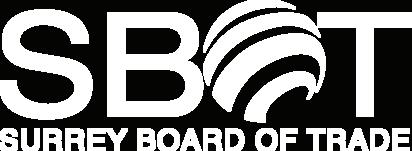
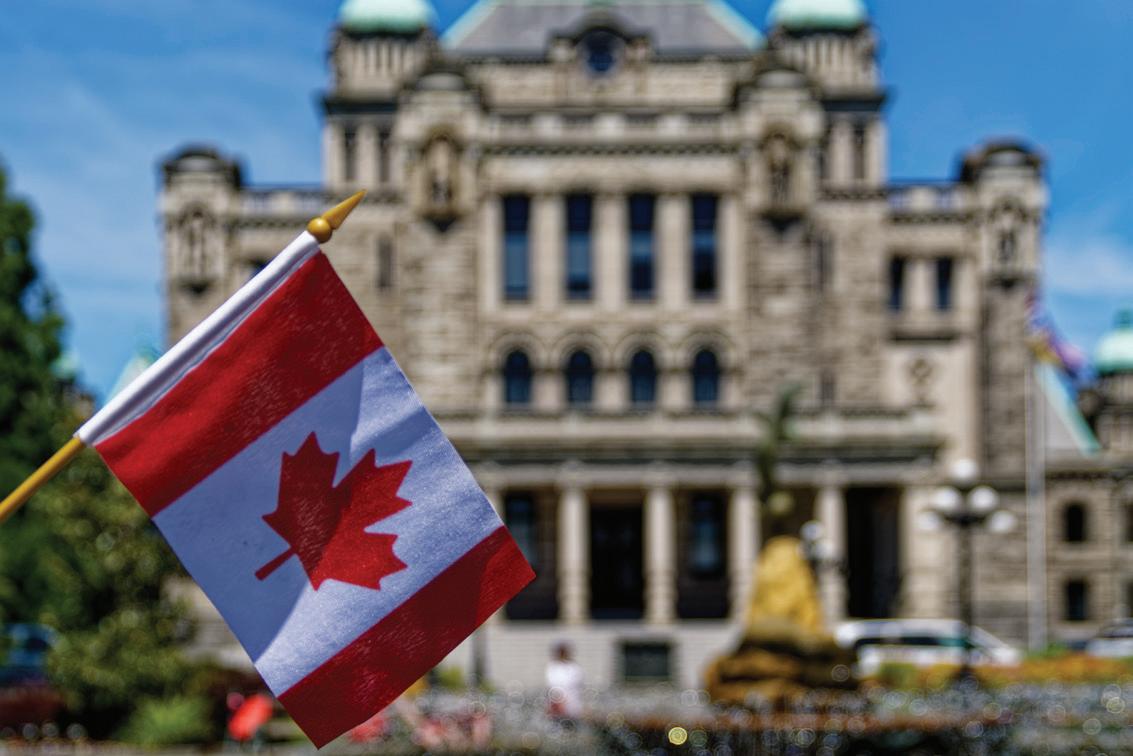


HAPPY HAPPY Canada Day Canada Day

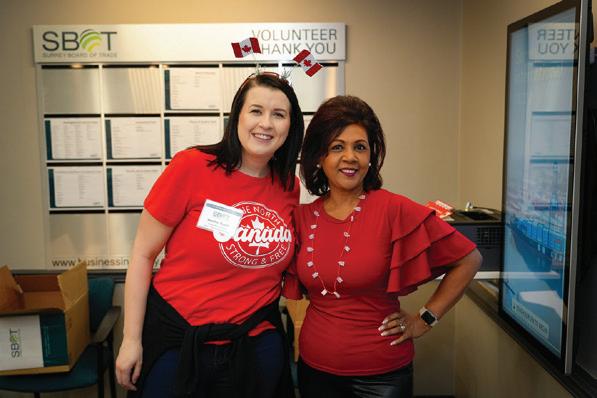


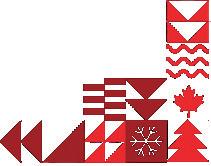


GEETANJLI SHARMA
Editor-in-Chief
DEAR READERS,
Happy Canada Day!
With heartfelt pride and gratitude, we welcome you to The Times of Canada’s special Canada Day Edition — a tribute to the vibrant spirit, resilience, and unity that define our great nation. This issue is more than a celebration; it is a reflection of the incredible people who shape our communities and make Canada shine.
In this edition, we spotlight inspiring local Canadians whose passion, achievements, and service continue to leave a lasting mark. From trailblazers in business and culture to leaders in community and innovation, their stories speak to the strength and diversity of our country.
We are deeply thankful to you — our readers, contributors, and supporters — for making this journey possible. Your continued encouragement fuels our mission to share stories that matter, connect communities, and uplift the voices that often go unheard.
To everyone who believes in The Times of Canada and in the rich cultural fabric of the Lower Mainland — thank you. Your trust inspires everything we do.
If you’re moved to share your story, lend your voice, or collaborate in future editions, we warmly invite you to reach out to us at info@thetimesofcanada.com. We’re always listening — and we look forward to growing together.
Sincerely,
Geetanjli Sharma Editor-in-Chief

















CANADA DAY
A Celebration of Unity, Diversity, and National Reflection
Every year on July 1st, people across Canada mark a momentous occasion: Canada Day, the national holiday that celebrates the birth of the Canadian Confederation. It commemorates the signing of the British North America Act (now the Constitution Act, 1867) which brought together the three separate colonies of Nova Scotia, New Brunswick, and the Province of Canada (later divided into Ontario and Quebec) into a single nation within the British Empire, officially called the Dominion of Canada.
Over time, Canada evolved into a fully independent country, and Canada Day has grown into a powerful symbol of national identity, unity, and pride.
A Day of Celebration Across the Nation
Canada Day is observed across the country with a wide range of public and private festivities that reflect the spirit of Canadian culture and community. From coast to coast to coast, Canadians participate in parades, fireworks displays, musical performances, family picnics, sports events, and street festivals. In urban centers like Ottawa, Vancouver, Montreal, and Toronto, tens of thousands gather to enjoy largescale, government-sponsored events featuring popular Canadian musicians, cultural showcases, and ceremonial displays.
In Ottawa, the capital city, Canada Day celebrations on Parliament Hill hold special national significance.
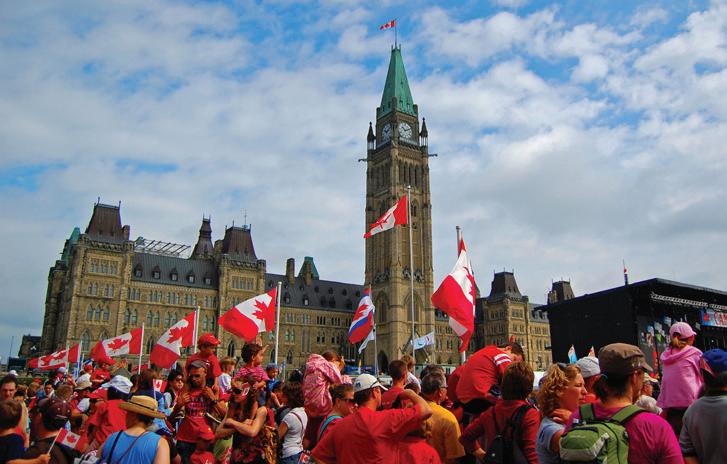
The event often includes appearances by the Prime Minister, performances by both emerging and well-known Canadian artists,
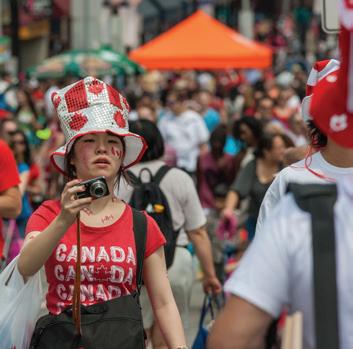
and a massive evening fireworks show above the Parliament buildings. Meanwhile, in rural and smaller communities, the day may be more intimate but no less spirited—residents come together for barbecues, local talent shows, family activities, and community gatherings.
Celebrating Canadian Identity and Multiculturalism
At its core, Canada Day is a time to celebrate what it means to be Canadian. Canada is globally recognized for its peaceful society, democratic values, and cultural diversity. One of the defining characteristics of modern Canada is its multiculturalism. People from
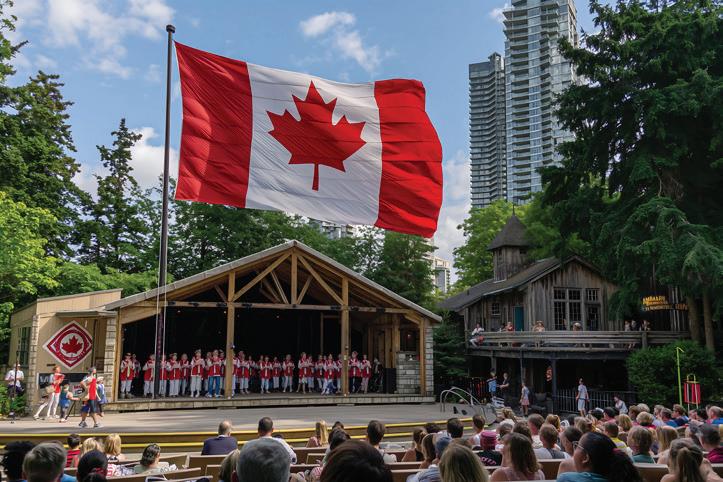
countless ethnic and cultural backgrounds call Canada home, and this diversity is often highlighted on Canada Day through food festivals, cultural performances, and flags representing global communities.
For new Canadians, the day holds deep emotional and symbolic significance. Many citizenship ceremonies take place on July 1st, as newcomers officially join the Canadian family. These ceremonies are often the emotional highlight of the day, serving as a powerful reminder of Canada’s values of inclusivity, respect, and freedom.
Reflecting on History and Indigenous Perspectives
In recent years, Canada Day has also become a time of critical
reflection, particularly regarding Canada’s colonial history and its relationship with Indigenous Peoples. While many Canadians celebrate the country’s progress and achievements, others, especially Indigenous communities and allies, observe July 1st as a day of mourning or resistance. For them, the founding of Canada also marks the beginning of policies that led to land displacement, cultural suppression, and generations of trauma through systems such as residential schools.
added a deeper, more inclusive dimension to the day.
Moving Forward with Unity and Hope
Canada Day today is not just a celebration of the past, but also a vision for the future. It provides an opportunity for Canadians to reflect on what kind of country they want to continue building—one that is inclusive, just, respectful of Indigenous rights, and responsive to the challenges of the present and future, including climate change, inequality, and global responsibility.
Whether you spend the day watching fireworks with your family, participating in a community event, volunteering, or simply taking a moment to reflect, Canada Day invites all Canadians to connect—to their country, to their communities, and to one another. It is a day to recognize our shared values, our diversity, and our ongoing journey toward a stronger and more united nation.

Events such as the discoveries of unmarked graves at former residential school sites have profoundly affected the national consciousness. As a result, more Canadians are beginning to use Canada Day not just to celebrate, but to acknowledge the full scope of the country’s history. Many communities now host events that focus on truth, reconciliation, education, and healing. This duality— celebration and reflection—has




Jacquoline Martin stands at the intersection of strength and serenity, where pageantry meets purpose and yoga becomes more than a practice—it becomes a way of life. With her feet grounded on the mat and her voice rising on stages across Canada, Jacquoline has emerged as a powerful advocate for wellness, self-worth, and authentic representation.
What began as a personal journey through emotional darkness has become a calling that touches lives far beyond her own. “I began practicing yoga as a hobby to maintain a sense of inner peace during an incredibly difficult period in my life,” she shares. “At the time, I was silently struggling with depression and emotional turmoil.” When the opportunity to pursue yoga teacher training appeared, she embraced it wholeheartedly—not as a career move, but as a lifeline. “What began as a personal coping
Crowns, Courage, and the Quiet Power of Wellness Jacquoline Martin
mechanism soon became essential to my growth—physically, mentally, and spiritually—helping me rebuild from the inside out.”
Jacquoline’s journey has been anything but conventional. Alongside her commitment to yoga and community healing, she’s also made her mark in the world of pageantry. While many see pageants as platforms for glamour and gowns, for Jacquoline, they were a crucible of transformation. “I used to constantly worry about how others perceived me,” she admits. “But that changed the moment I found myself live on air, answering a question in front of an entire nation. In that vulnerable, high-pressure moment, self-judgment fades, and you’re left with only one choice: to accept and love yourself, no matter the outcome.”
The alignment between her yoga philosophy and pageant experiences
is no accident. She draws a meaningful parallel between the two worlds: “This experience aligns beautifully with the yogic principle of ahimsa—non-judgment and non-harm—not just toward others, but also toward ourselves. Both pageantry and yoga have taught me that true confidence comes from embracing who you are without fear, criticism, or comparison.”
Wearing many crowns—both literal and symbolic—Jacquoline has learned the importance of balance. “Pageantry celebrates confidence, poise, and purpose under pressure, while wellness reminds me to slow down, listen inward, and honour my boundaries,” she says. “Balancing both means embracing discipline and grace in equal measure. Pageantry has taught me how to show up boldly, while wellness has taught me how to show up honestly.”
That honesty is especially present

in how she fosters inclusive yoga spaces. In a time when wellness can feel commercialized or exclusive, Jacquoline ensures her practice is rooted in accessibility and empathy. “Yoga is a beautiful and inclusive practice—one that truly welcomes everyone. Whether you’re three or eighty-six, from India or Ontario, flexible or not, able-bodied or living with a disability, yoga offers something for you,” she says. “My goal has always been to foster a sense of belonging, both inside the studio and beyond.”
This commitment is especially relevant to Canada’s younger generations, who are navigating a turbulent world of digital overload, identity pressures, and mental health challenges. “Yoga and self-discipline can help keep both young and older Canadians grounded,” Jacquoline explains. “Studios provide safe, quiet spaces where individuals can step away from external pressures and reconnect with themselves. Through regular practice, self-discipline
brings structure to daily life, supporting habits that foster mental clarity and emotional stability.”
In today’s evolving pageant culture, Jacquoline is not just redefining beauty standards—she’s reshaping the very conversation around them. “When I began my pageant journey, I assumed I’d need to lose weight to fit the stereotypical image of a beauty queen,” she reflects. “But rather than filling my heart with self-criticism, I chose to embrace my body as it was.” This radical act of self-love became a defining feature of her platform. “Young women deserve to know that titles can be earned based on the light they carry within and the dreams they strive toward—not the number on a scale or the size of their dress.”
Her platform work doesn’t stop there. Jacquoline also champions causes close to her heart, including the BC Epilepsy Society and the Canadian Mental Health Association. “As someone living with a disability, I’ve personally relied on the resources and support these organizations provide, and I deeply understand their impact on individuals and families alike,” she shares. “Supporting them through my pageant journey is more than a cause—it’s a reflection of my lived experience.”
Whether she’s representing Canada in a yoga studio or on a stage, Jacquoline carries her identity with authenticity and grace. “To stand on a national or global stage is not simply about visibility; it is about
service, integrity, and the willingness to be a voice for those who need one,” she says. “I’ve come to be known in my community as a ‘child of light’—someone who leads with warmth, sincerity, and a genuine desire to uplift others.”
Looking ahead, Jacquoline hopes to spark a cultural shift—one that redefines strength for generations to come. “True strength is not limited to lifting heavy weights or reaching the top of a leaderboard—it is not always loud, visible, or met with applause,” she says. “Real strength is intimate, deeply personal, and often invisible to the outside world.”
Whether it’s a small act of bravery or a bold public step, Jacquoline Martin reminds us that power lies in presence, resilience, and radical self-acceptance. Her story is not only a testament to her journey but a guiding light for all who seek healing, empowerment, and a deeper connection to themselves and the world around them.





Business Management & Logistics Programs
Digital Marketing & Business Management (Diploma and Co-Op)
Supply Chain & Operations Management Diploma
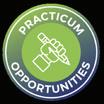
Hospitality Manage Programs
Hospitality Manage (Diploma and Co-O
Finance Programs
Financial Office Ass
Insurance Professio
Education Assistant Certificate
Social Services & Community
Support Worker Diploma Education & Social Services Programs
Healthcare Programs
Healthcare Office Assistant Diploma
Dental Assistant Certificate
Pharmacy Assistant
Pharmacy Technician
Veterinary Assistant Diploma
OUR HISTORY
Excel Career College has been helping students launch new careers for 35 years Since 1989, we have combined curated curriculum with hands-on, practical skills development
From our humble beginnings in the Comox Valley, we’ve grown to include campuses in Kelowna, Victoria, and Surrey, continuing to expand and adapt to meet the needs of our students

Information Techno
Cyber Security Dipl


Agriculture and Sustainability Programs
Aquaculture Technician Diploma
Supply Chain & Operations Management Diploma
High-Demand Career Programs: Programs aligned with Canada’s job market needs.
Versatile Formats: 100% Online, Blended, or In-person.
Special Payment Plans: Students can pay in installment plans
Hands-on Work Experience: Students will gain practical skills during the class Instructors with Industry Expertise: Instructors bring their experience to the classroom









FINANCING FUTURES, FUELING DREAMS Ravi Singh
In Canada’s ever-evolving real estate and financial world, Ravi Singh has carved a name for himself as more than just a commercial mortgage specialist—he’s a builder of dreams. Behind every property financed, there’s a story, and for him, it’s never just about the transaction—it’s about the people, the passion, and the potential behind each deal.
His journey began years ago, not in a boardroom but as a young boy arriving in Canada from India. “I was instantly captivated by the energy of the real estate and finance world,” he shares. What started as fascination quickly transformed into a lifelong purpose: helping people turn their goals into reality through smart, strategic lending. “What drives me every day is knowing the impact this work has—not just on properties or balance sheets, but on real lives.”
Every file that crosses his desk represents a vision waiting to take shape. “Each deal is a dream,” he says. “It’s a small business launching, a family-run restaurant expanding, or a new community hub taking root.” That sense of meaning

is what keeps him motivated in an industry known for pressure, pace, and precision.
Like many in the lending world, he’s had to navigate turbulent shifts in the Canadian financial landscape. Regulatory changes and sharp interest rate hikes have posed serious challenges, especially for first-time borrowers and small businesses. His response? Adapt and advocate. “I’ve focused on education, transparency, and tailored solutions,” he explains. “Clients need more than financing— they need clarity and a partner they can trust.”
That commitment has made him a go-to expert for entrepreneurs— particularly those from underrepresented communities. By simplifying complex processes and championing their vision, he’s helped countless small business owners access the capital they need to grow. “It’s not just about credit scores or numbers on a page,” he emphasizes. “It’s about potential, grit, and the impact these businesses can have on their communities.”
And that impact is tangible. From helping a newcomer open their first convenience store to supporting a local café’s second location, he’s witnessed how one loan can ripple outward. “These projects create jobs, bring neighborhoods to life, and inspire others to dream big,” he says. “That’s the real reward—knowing I played a part in something bigger than myself.”
Beyond lending, one of the issues closest to his heart is financial literacy. For many, particularly young Canadians or newcomers, navigating the world of finance can be overwhelming. “I’ve met clients who felt intimidated or excluded because no one took the time to explain things,” he notes. To close that gap, he makes a conscious effort to
communicate clearly, answer every question, and ensure clients feel confident throughout the process. “Knowledge is power. My job is to make sure they leave the room more empowered than when they walked in.”
To youth looking to build careers in finance or launch their own ventures, his advice is simple yet powerful: believe in yourself, stay curious, and surround yourself with mentors. “Take risks. Ask questions. Learn every single day,” he says. “Growth often happens when you push past your comfort zone.” He’s quick to acknowledge that the road isn’t always easy—but it’s worth it. “Passion and persistence will carry you through.”
Looking ahead, he sees the role of mortgage professionals changing significantly. As technology becomes more integrated into the industry, clients will expect faster service and more personalized support. But the heart of the job will remain the same: trust, strategy, and relationships. “We’ll need to blend digital tools with a deep understanding of evolving market needs,” he says. “Sustainable and responsible lending will be more important than ever.”
If given the opportunity to spark a long-term shift in the financial system, his focus would be clear: making financing more accessible for first-time buyers and small businesses. “Too many promising entrepreneurs are stopped before they can even begin,” he says. “We need to reduce those barriers and invest in people’s potential.”
That belief in equity and empowerment is also what defines him as a changemaker. “To me, being a Canadian changemaker means using your skills to lift others
up,” he reflects. “It’s about helping people overcome barriers and realize their dreams—no matter where they come from.”
It’s a mission he lives daily, from the office to the community. Whether it’s mentoring youth, supporting newcomer entrepreneurs, or finding creative financing solutions for clients others may overlook, he leads with integrity and impact. “It’s not about titles or transactions— it’s about building stronger, more connected communities,” he says.
In an industry often driven by numbers, Ravi brings a muchneeded human touch. His work bridges ambition with access, numbers with narratives, and vision with viability. Every deal is more than paperwork—it’s a new chapter in someone’s story. And through each of those stories, he’s quietly reshaping what it means to lead in Canada’s financial future.








Tanu Bajaj Redefining Reinvention and Empowering Newcomers, One
Nail at a Time
When Tanu Bajaj stepped off the plane as an international student, she carried more than just a suitcase. She brought with her an unwavering determination to build a life in Canada—a life of purpose, selfdiscovery, and service. Today, as a licensed immigration consultant and founder of Azalea Nails, Tanu is redefining what it means to succeed by blending resilience, compassion, and creativity into everything she touches.
Her story is not a linear path—it’s a vibrant mosaic of transformation.
After completing her studies, Tanu established herself in Canada’s IT industry, where she thrived for over a decade. For many, that would be the pinnacle of a successful immigrant journey. But for Tanu, the birth of her son in 2018 brought with it a wave of introspection and a deeper understanding of what fulfillment truly meant.
“ Empowerment doesn’t always have to look grand. Sometimes it’s in the little things—a compliment, a shared laugh, or simply giving someone the space to feel beautiful.” - Tanu

“Motherhood shifted everything,” she reflects. “It made me pause and ask: what kind of legacy do I want to leave behind? What example do I want to set for my son?”
That reflection sparked a courageous pivot. In 2021, she transitioned into immigration consulting, driven by a profound desire to help others navigate the same challenges she once faced. As someone who had experienced the immigrant journey firsthand—from the cultural adjustment to the paperwork maze— Tanu quickly became known not just for her expertise, but for her empathy.
“Every newcomer deserves guidance, dignity, and support,” she says. “I wanted to be that person who made them feel less alone.”
Through her consulting work, she’s helped countless individuals and families settle into life in Canada, bringing clarity and comfort to a process that can often feel overwhelming. But even as she grew her practice, another long-held passion kept calling: beauty.
“I’ve always believed that beauty is a form of self-care—and even healing,” Tanu shares. “The salon experience isn’t just about aesthetics; it’s about feeling confident, cared for, and connected.”
That belief became the foundation of Azalea Nails, a boutique nail salon she founded with a vision far beyond manicures. Located in the heart of the community, the studio is designed to be a safe and inclusive space—especially for immigrant women navigating the complexities of a new country, language, or culture.
Unlike many conventional beauty studios, Azalea Nails is powered by a team of diverse, immigrant women— each with a unique story, just like
Tanu’s. This shared understanding creates a culture of empathy, where both staff and clients feel genuinely seen and valued.
“Many of our clients come not just for nail care, but for conversation, connection, and emotional support,” she explains. “Sometimes, a single hour in the salon can ease someone’s stress more than they expected.”
At Azalea, the atmosphere is more like a supportive sisterhood than a traditional salon. Kindness is nonnegotiable. Language barriers are met with patience. Cultural differences are embraced. It’s not just a business—it’s a bold community statement.
Balancing two very different careers—immigration consulting and salon ownership—requires vision, time management, and an enormous amount of heart. But Tanu sees deep alignment between the two. The empathy and problem-solving she brings to consulting directly inform how she leads her salon team. Likewise, her creativity and community-building skills elevate her consulting practice, giving clients a fuller experience rooted in genuine care.
“Both of my careers are about transformation,” she says. “One helps people build a life in a new country; the other helps them feel confident in their skin. They’re both about identity, reinvention, and belonging.”
Azalea Nails is also a reflection of Tanu’s own evolution—a testament to the power of reinvention at any stage of life. Her message is clear: you don’t have to choose just one path.
“You can be a mother, a consultant, a business owner—and still be growing,” she says. “Success isn’t
about fitting into a mold. It’s about embracing all the parts of who you are.”
To young women, especially newcomers to Canada, Tanu offers a message of encouragement and bold authenticity. “Don’t limit yourself. Don’t wait for permission. Your lived experience is your strength. Whether your passion is in tech, beauty, law, or food—follow it. Trust it. There is space for you here.”
Looking to the future, Tanu hopes to expand Azalea Nails into a broader platform—one that blends wellness, entrepreneurship, and community mentorship. She envisions hosting workshops for immigrant women, offering mentorship in both business and self-development, and eventually growing the Azalea brand into a hub of empowerment and celebration.
“If I could change one thing about Canada’s business ecosystem,” she says, “it would be to create more access to mentorship and funding for immigrant women. There is so much untapped potential in our communities.”
Her mission is clear: help immigrant women feel powerful, capable, and worthy—not just through flawless nails, but through genuine opportunity and recognition.
From international student to IT professional, mother, immigration consultant, and now entrepreneur, Tanu Bajaj’s journey is proof that transformation is always possible— and that our greatest power often lies in our willingness to start again.
And through Azalea Nails, she’s building more than a beauty business—she’s creating a


COVER STORY
Heart First, Action Always BRYAN TEPPER
A Grounded Voice for Surrey-Panorama
In the heart of Surrey-Panorama, Bryan Tepper is more than just a name on a ballot—he’s a community builder, a principled advocate, and a boots-on-the-ground public servant. With his sleeves rolled up and his heart firmly rooted in service, this RCMP-veteran-turned-MLA is rewriting what it means to be a modern-day changemaker in British Columbia.
Bryan’s path to politics wasn’t born from ambition, but from a genuine belief that every voice deserves to be heard. “My passion for public service was sparked early on,” he says. “I’ve always believed that strong communities built on shared values can transform lives.” Raised by a resilient single mother and guided by a stepfather whose humility and generosity shaped his worldview, Bryan learned the importance of hard work, fairness, and showing up for others. Those same values now guide his every step in public life.
From the start, Bryan immersed himself in grassroots politics— volunteering at every level of government and championing conservative principles like freedom, opportunity, and accountability. Since taking office as MLA, his role has evolved from advocate to problem-solver. “It’s one thing to
support ideas,” he notes, “but it’s another to deliver results— whether that’s helping a family navigate a bureaucratic maze or shaping policy that unlocks BC’s economic potential.”
And deliver he has.
One of Bryan’s proudest moments as MLA came not from a major headline, but from helping an injured young man untangle five years of red tape with provincial agencies. “When we finally got him answers—and closure—it reminded me why I do this,” he shares. “Restoring someone’s faith in government? That’s impact.” His hands-on approach also earned him a seat on the finance committee, where he travels the province, listening to voices from every corner of British Columbia.
So what guides him in the face of difficult decisions? Bryan doesn’t hesitate: “Family, freedom, and fairness.” These values were shaped during summers spent in Saskatchewan, where neighbors helped neighbors and communities stood tall in the face of adversity. That prairie spirit remains the bedrock of his approach to policy. Whether advocating for healthcare

improvements, protecting the resource sector, or ensuring public safety, he consistently fights for what uplifts everyday Canadians.
Staying connected to his constituents isn’t a box he checks— it’s the cornerstone of his leadership. “I don’t just show up for photo ops,” Bryan says. “I attend community gatherings, host town halls, and
spend time listening—really listening.” Whether he’s chatting with a small business owner facing rising costs or a student sharing their dreams, Bryan brings authenticity and presence. “Trust is built through honesty, consistency, and action— not just during election season, but every single day.”
In a riding as culturally rich as SurreyPanorama, representation matters. Bryan takes that responsibility seriously. “British Columbia’s diversity is our strength,” he says. “But it also means our policies must reflect a wide range of experiences and needs.” He’s a vocal supporter of small businesses—many of them run by new Canadians— and he champions policies that foster inclusive economic growth, educational access, and job creation. “If you’re willing to work hard, you should have every chance to succeed—regardless of where you come from.”
Youth empowerment is another pillar of Bryan’s platform. Alarmed by the rising cost of living and job insecurity driving young people out of the province, he’s advocated for revitalizing BC’s natural resource sector. “High-paying, stable jobs are critical to keeping our youth here,” he says. “That means unlocking opportunities in forestry, mining, and energy—industries that once made BC a place people dreamed of building a life in.”
On housing, he pushes for cutting red tape and increasing supply, while in education, he’s focused on strengthening trades training and apprenticeships. “Not everyone’s path includes university—and that’s okay,” he says. “We need to respect and invest in all pathways to success.”
Bryan’s commitment to youth goes far beyond policy. A long-time community volunteer, coach, and mentor, he regularly visits schools, hosts youth forums, and creates platforms where young voices can speak up—and be heard. “Their ideas challenge us to think bigger,” he says with pride. “And they remind me that leadership isn’t about age or title—it’s about stepping up.”
It’s a lesson he models every day, whether in the legislature or walking through the neighborhoods of Surrey. “Leadership means being approachable, principled, and willing to act—even when it’s hard,” he explains. That philosophy was put to the test when he stood in defense of free speech in the legislature, facing unjust backlash. “But I don’t back down from what I believe is right. British Columbians deserve leaders who won’t fold under pressure.”
Despite the polarized political climate, Bryan remains hopeful. “Being a Canadian changemaker means standing firm in your values while working toward unity,” he says. “We can disagree and still build something better together.” That belief fuels his vision for one major, longterm systemic change: public safety reform. “Current policies on drug decriminalization and lenient sentencing aren’t working,” he


states firmly. “We need a balanced approach—robust rehab programs, yes, but also strong enforcement to protect families, businesses, and public spaces.”
For Bryan, a safer, more prosperous BC is within reach—but only if leaders stay connected, principled, and community-focused.
At home, his drive is matched by his wife Rona—a community powerhouse in her own right— whose volunteer work is so extensive, Bryan jokes that her calendar outpaces his. Together with their children, Emily, Charley, and Denny, they’re a family grounded in gratitude and service.
“Everything I do is for them—and for the families like ours who call Surrey-Panorama home,” he says with a smile. “This isn’t just a job. It’s a mission.”
And with Bryan Tepper leading the charge, that mission is in strong, steady hands.


MANDEEP DHALIWAL
A New Voice for Leadership, Equity, and Community
In a political landscape often criticized for being out of touch with everyday concerns, Mandeep Dhaliwal is a refreshing force of empathy, action, and unwavering commitment to the people he serves. As a Member of the Legislative Assembly (MLA), Dhaliwal represents more than a riding—he represents a movement toward inclusive leadership, meaningful change, and the belief that politics should be for everyone, especially those who’ve long felt left out of the conversation.
“What inspired me to step into politics,” Dhaliwal reflects, “was seeing how often everyday people— especially youth—are overlooked in decisions that directly affect their lives.” Raised in a working-class family, he witnessed firsthand the struggles families face, particularly around education and lack of parental involvement in schools.
“That experience pushed me to become a stronger advocate for education, youth, and community engagement,” he says. It also shaped his leadership style—grounded in empathy, accountability, and service.
“Public service isn’t about status, it’s about trust, equity, and ensuring every voice is valued, especially those who’ve been pushed to the margins for far too long.”
For Dhaliwal, representing his community is not an abstract duty— it’s personal. “My core responsibility
as an MLA is to listen, advocate, and act on behalf of the people I serve,” he says. Whether the issue is healthcare, housing, education, or workers’ rights, Dhaliwal believes in solutions rooted in real conversations. “I stay grounded by being present in the community, meeting regularly with constituents, attending events, and keeping an open-door policy. It’s not about politics—it’s about people.”
That philosophy was powerfully demonstrated when he introduced the Parental Transparency and AgeAppropriate Education Act. Inspired by heartfelt discussions with parents who felt excluded from decisions about their children’s education, the bill emphasized accountability and parental involvement. “This

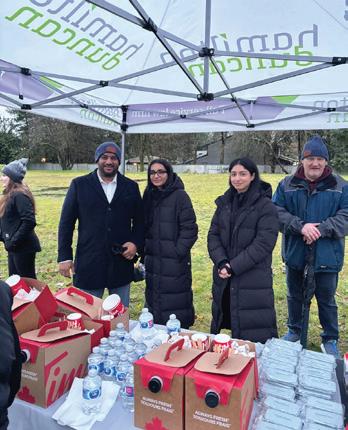
wasn’t just about policy—it was about trust,” he says. “Seeing the community dialogue that followed— parents, educators, and leaders coming together—made me feel like I was truly making a meaningful difference.”
Dhaliwal’s deep commitment to inclusion is reflected in everything he does. “As a representative of a diverse and growing Canadian population, I believe it’s essential to lead with empathy, cultural awareness, and a commitment to equity,” he explains. Whether it’s through attending cultural events, hosting forums, or meeting with grassroots organizations, Dhaliwal makes it a point to hear from everyone—especially those who feel their voices have been ignored. “Diversity is not a challenge—it’s our strength. My job is to build trust and ensure every community sees themselves reflected in our policies.”
Community engagement isn’t just part of his job description—it’s the foundation of his work. “I attend local events, host town halls, visit schools and community centres, and keep communication open through calls, emails, and social media,” he shares. “I see my role not just as a policymaker, but as a bridge between government and community.”
But for Dhaliwal, perhaps the most meaningful part of his work lies in inspiring the next generation. “To young Canadians, especially those from immigrant or minority backgrounds, I want to say: your voice matters, and politics needs you.” He understands that many young people feel like the system wasn’t built for them—and in many ways, it wasn’t. But that, he says, is why their leadership is so vital. “Don’t let doubt or discrimination make you feel small. You belong in every space where decisions are made.”
His actions back up his words. Dhaliwal is actively involved in several initiatives aimed at youth empowerment, including roundtables, mentorship programs, and civic leadership training. “I want youth to see themselves as leaders— not someday, but right now,” he says. Through partnerships with schools, youth councils, and local nonprofits, he helps create safe, inclusive spaces for young voices to emerge. “When youth are empowered, our communities and our democracy grow stronger.”
In a world full of rapid change, Dhaliwal believes Canada must hold tight to key values. “Equity, inclusion, compassion, justice, democracy, and reconciliation— these are non-negotiable,” he says firmly. He stresses the need for environmental sustainability, protection of human rights, and an unwavering commitment to truth and reconciliation with Indigenous peoples. “By embracing these principles and empowering young people to lead with empathy, we can shape a Canada that is fair, united, and full of promise.”
When asked what it means to be a Canadian changemaker, Dhaliwal doesn’t hesitate. “It means standing up for others, challenging injustice, and working every day to build
a more inclusive, compassionate country,” he says. It’s not about titles or applause. “It’s about impact, and having the courage to do what’s right—even when it’s not easy.”
Looking to the future, Dhaliwal has his eyes set on systemic reform— starting with education. “If I could help drive one long-term change in Canada, it would be building a more inclusive and equitable education system,” he says. He envisions a system that supports mental health, includes diverse cultural perspectives, and engages parents as partners. “Education shapes our future. And when we get it right— when every child has access to the support they need—we break cycles of poverty, discrimination, and disconnection.”
Through his leadership, advocacy, and passion, Mandeep Dhaliwal is redefining what it means to serve in public office. He is not only a changemaker but also a connector—a voice for those too often left out, and a champion for a future where everyone, no matter their background, has the opportunity to thrive.
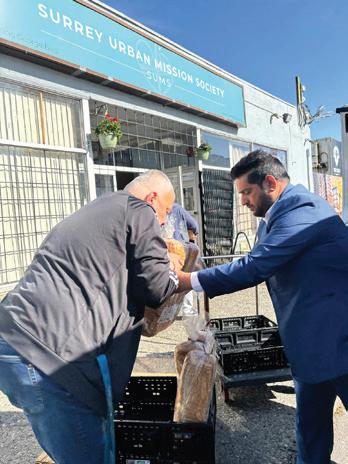


Stirring Up Stardom with Spice and Style Chef Balram Bali
Chef Balram Bali, affectionately known in the Lower Mainland as “The Celebrity Chef,” is a prominent figure in Canada’s culinary world. Based in Surrey, British Columbia, he has established himself not just as a skilled chef, but also as a cultural ambassador for Indian cuisine and a trailblazer in luxury catering. His journey from India to Canada reflects a deep passion for food, tireless hard work, and a commitment to excellence that has earned him both professional acclaim and a loyal following.
Early Beginnings and Culinary Training
Chef Bali’s passion for cooking began early in life. Born and raised in India, he was immersed in the rich culinary traditions of the subcontinent from a young age. He trained professionally in hospitality and culinary arts and honed his skills in several prestigious hotels, including the Radisson Hotel in Jalandhar, where he gained valuable experience in high-end catering and hospitality management.
His training in India laid the foundation for what would become a globally-minded approach to cuisine. While rooted in traditional Indian flavors, Chef Bali has always
embraced innovation and the fusion of international culinary techniques. His journey reflects not only a respect for classical cooking but also a drive to adapt, learn, and elevate dishes to suit a wide range of palates.
A New Chapter in Canada
In 2007, Chef Bali moved to Canada, bringing with him a wealth of experience and a vision to redefine Indian food presentation in his new home. Settling in British Columbia, he quickly immersed himself in the local food scene, working in some of the region’s top hotels and building a reputation for precision, creativity, and hospitality. It wasn’t long before his talents caught the attention of clients and industry leaders alike.

Chef Bali’s arrival came at a time when Canada’s culinary landscape was becoming more diverse, and Indian cuisine was gaining increased recognition beyond traditional curries and buffets. Bali’s commitment to refined, elegant presentations of authentic Indian dishes helped set a new standard, particularly in VIP and high-end catering.
Collaborations and Recognition
Over the years, Chef Bali has
collaborated with several well-known names in the culinary world. Most notably, he has worked alongside Chef Sanjeev Kapoor, one of India’s most famous celebrity chefs, and Chef Harpal Singh Sokhi, known for his charismatic television presence and modern take on traditional Indian recipes. These partnerships have elevated Chef Bali’s profile and helped him build a network of culinary professionals across continents.
In 2016, he was honored at the Drishti Awards, a respected community recognition event in the Lower Mainland, for his outstanding contributions to the Indo-Canadian
culinary scene. The award validated not only his talent but also his influence in shaping the food culture of the growing South Asian diaspora in Canada.
Curry Sensation and Catering Excellence
Chef Bali co-founded Curry Sensation, a culinary venture that specializes in gourmet Indian food and VIP catering services. The business quickly became known for its customized menus, polished presentation, and premium service—features that distinguish it from more casual or mass-market Indian catering providers. Whether it’s a wedding, corporate gala, or private event, Chef Bali brings professionalism, taste, and visual appeal to the table.
His clientele includes respected companies and business figures such as Nanak Foods, Fruiticana’s Tony Singh, Thind Properties, and Jagraj Garcha. These partnerships are a testament to the trust and high standards that Chef Bali upholds in every event he caters.

Beyond catering, Curry Sensation also offers meal delivery services, which became particularly popular during the pandemic. These meals allowed customers to enjoy gourmet Indian cuisine from the comfort of their homes and helped support the business during challenging times.
Celebrity Chef and Digital Influence
Chef Bali has successfully embraced the digital era, using social media to reach a broader audience and showcase his culinary creations. His TikTok account, which boasts over 8,100 followers, 1,400+ videos, and 10 million+ likes, is a platform where he shares cooking tips, behind-the-scenes glimpses of events, and food plating techniques. His warm personality and engaging content have helped him earn the title of “celebrity chef” in the digital realm.

Through social media, Chef Bali has also educated and inspired younger chefs and home cooks, highlighting everything from traditional Punjabi dishes to contemporary Indian fusion recipes. His online presence extends his influence beyond Surrey and British Columbia, connecting with food lovers across Canada and internationally.
Community Engagement and Cultural Impact
Chef Bali is more than a culinary entrepreneur; he is also a key figure in the Indo-Canadian community. His work celebrates Indian culture while making it accessible and appealing to a broader Canadian audience. His events often include cultural elements such as traditional decor, live cooking stations, and fusion dishes that reflect the diversity of Canada.
He regularly participates in community events, festivals, and fundraisers, often offering his services to support charitable causes. This commitment to giving back has earned him not only business success but also genuine admiration within the community.
Looking Ahead
With a growing clientele, strong social media following, and respected industry reputation, Chef Balram Bali’s star continues to rise. He represents a new generation of chefs who balance cultural authenticity with modern professionalism.
As he continues to innovate and expand his offerings, Chef Bali remains focused on what matters most: delivering exceptional food experiences and celebrating the rich culinary heritage of India.
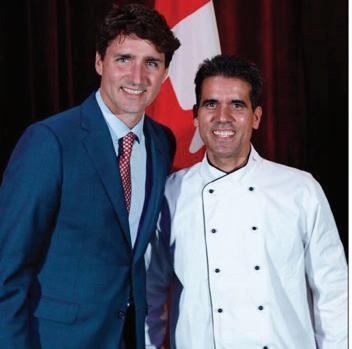



GOLD AS AN INVESTMENT
A Safe Haven in Turbulent Times
Gold has delivered an extraordinary performance in recent years. After a strong rally of approximately 27% in 2024, bullion entered 2025 on fire— rising another 14–18% early in the year, and surpassing $3,000/oz for the first time. It has since surged even higher, touching $3,300/oz in April, with prices hovering between $3,100 and $3,300 during mid-2025. This rally underscores gold’s enduring role as a global safe haven during periods of heightened uncertainty, especially as inflation concerns and policy shifts ripple through major economies.
Key Market Drivers
Geopolitical & Economic Uncertainty
Ongoing trade tensions, tariff threats, and conflict hotspots in the Middle East have consistently driven investors toward gold’s security. Escalating risks involving
energy routes, nuclear threats, and sanctions regimes have further deepened the appeal of hard assets.
Central Bank Accumulation
Global central banks have been net buyers for three straight years, purchasing over 1,000 tonnes annually—more than double the decade-long average—fueling structural backing for gold. Countries like China, Turkey, and India continue to diversify away from the U.S. dollar, bolstering demand.

ETF Inflows & Retail Demand Exchange-traded funds have seen record inflows—226 tonnes of gold bought in Q1 2025 alone—as investors continue to diversify amid volatility. Retail investors, particularly in Europe and Asia, have turned to gold as a store of wealth amid fears of currency debasement.
Monetary Policy & Dollar Weakness
Expectations of Federal Reserve rate cuts and a softening U.S. dollar have significantly supported gold prices. With inflation still hovering above target in many regions, gold serves as a hedge against eroding purchasing power.
Outlook & Forecasts
Short-term (2025):
Analysts expect gold to fluctuate between $3,100–$3,500/ oz through late 2025. Institutions like Goldman Sachs, UBS, Deutsche Bank, and Bank of America hold
targets from $3,000 to $3,500/ oz, citing both macroeconomic headwinds and safe-haven demand.
Medium-term (2026+):
After Q3 2025, Citi forecasts a pullback to $2,800–$3,000/oz, potentially dipping below $3,000/ oz if global growth stabilizes and risk appetite returns. More optimistic scenarios suggest rates reaching $3,700 to $4,000/oz amidst persistent economic stress or if a global recession unfolds.
Risk Factors
> A strengthening U.S. dollar, improved global growth, or unexpected Fed hawkishness could trigger periodic pullbacks.
> Overheated prices may prompt investors to take profits, dampening short-term momentum.
> As physical demand wanes in
consumer-heavy markets like India and China, bullion could face headwinds if sentiment changes.
Why Investors Still Value Gold
Portfolio hedge: A classic store of value amid inflation and market instability.
Diversification tool: ETF and central bank purchases reflect widespread institutional confidence.
Tactical opportunities: Many experts suggest buying during dips—ideally around $2,700–$3,000/ oz—for medium-term gains.
Psychological appeal: Gold still holds a deep-rooted psychological and cultural value, particularly in times of financial or political stress.
Gold has cemented itself as a top performer in 2024–2025, driven by a rare convergence of macro
FROM SMALL BEGINNINGS TO BIG DREAMS
A Nurse Practitioner’s Journey of Grit, Compassion, and Purpose
Raised in a hardworking immigrant family of five, my journey began alongside my grandfather in berry fields, learning the values of discipline, compassion, and dedication. Watching him battle Parkinson’s and dementia fueled my calling to serve in healthcare. The chaos of hospitals felt like purpose—not noise.
After high school, I pursued psychiatric nursing, followed by a Bachelor of Science in Nursing from BCIT. Practicing in rural Manitoba deepened my passion, but I sought greater autonomy, returning to school as a single mother to earn my Master’s and become a Nurse Practitioner. Working in North Surrey, I focused on vulnerable populations—those battling mental health issues, addiction, and chronic illness.
Despite facing personal hardships—divorce, single parenthood, and the tragic loss of a loved one to suicide—I persevered, driven by the desire to be a strong mother and role model. In 2021, during the pandemic, I returned to school and recently completed my Doctorate.
factors: geopolitical risk, central bank accumulation, monetary easing, and investor demand. Short-term forecasts hover around the $3,100–$3,500/oz range, though a correction may follow later in 2025. Over the long haul, a 5–10% portfolio allocation to gold remains a prudent strategy for risk management and diversification— especially if uncertainty remains a constant theme in global markets. With volatility likely to persist, gold continues to shine as both a defensive and strategic asset in modern portfolios.


My mission is to dismantle stigma around addiction and mental health within the South Asian community, fostering trust through empathy and care. I envision a system where compassion is the foundation of treatment, and where providers advocate for change at every level.
To aspiring professionals, I say: never stop believing. Challenges are not roadblocks, but reminders to push harder. Surround yourself with those who uplift and reflect your values.
Balancing personal well-being and professional success is ongoing. I’ve learned to pause, prioritize self-care through exercise, healthy habits, and spirituality. Life isn’t a race—it’s a journey of resilience and reflection.
By: Inder Dosanjh



Fatigue is one of the most common and dangerous challenges faced by truck drivers. Long hours behind the wheel, irregular schedules, and limited access to healthy food or sleep can lead to chronic tiredness. This not only affects a driver’s safety but also their overall health and job performance. However, with smart habits and a consistent routine, drivers can manage fatigue effectively.
The most important factor in fighting fatigue is quality sleep. Aim for 7 to 9 hours of rest each night, even if you’re sleeping in your cab. Creating a sleep-friendly environment helps — use blackout curtains, earplugs, or white noise to minimize disturbances. Maintaining a regular sleep schedule, even on days off, helps your body stay alert during waking hours. Skipping sleep or relying only on naps builds up sleep debt, which can’t be “caught up” quickly.
Caffeine can offer a temporary boost, but it should be used strategically. Drinking coffee or energy drinks early in your shift can help with alertness. However, consuming caffeine late in the day can interfere with your ability to sleep later. Be especially cautious with sugary energy drinks, which often cause a quick crash once the effects wear off.
Scheduled breaks are also crucial. A short 10–15 minute break every two hours allows you to move around, stretch, and get some fresh air. This helps reduce muscle stiffness and clears mental fog, making it easier to stay focused during the next stretch of driving.
Nutrition plays a key role in maintaining energy. Opt for high-protein, low-sugar snacks like nuts, hardboiled eggs, Greek yogurt, or jerky. Avoid heavy, greasy meals that lead to sluggishness. Instead, try eating smaller meals more frequently throughout the day to keep energy levels stable. Packing your own meals when possible helps you control what you eat and avoid the temptation of fast food.
Hydration is just as important. Dehydration can cause fatigue, headaches, and slower reaction times. Aim to drink water consistently throughout the day — at least 64 ounces is a good goal. Minimize sugary sodas and excessive coffee, which can dehydrate you over time.
Keeping your mind active during long stretches is another effective tactic. Listening to audiobooks, engaging podcasts, or upbeat music can keep your brain alert and
FIGHTING FATIGUE
engaged. Avoid overly relaxing or monotonous content that could lull you into drowsiness.
Natural light exposure is also helpful. Sunlight helps regulate your internal body clock, so try to spend time outside during daylight hours — even during short breaks. If you’re driving mostly at night, consider using a light therapy lamp during off-hours to mimic natural light and support healthy sleep rhythms.
It’s critical to recognize early signs of fatigue. Yawning, drifting out of your lane, struggling to keep your eyes open, or missing traffic signs are all warnings that you need to rest. Don’t ignore these signs — pull over and take a nap or stop for the day if needed. A 15–30 minute nap can significantly boost alertness without making you groggy.
Lastly, stay physically and mentally active. Stretch during breaks, walk around your truck, and find small ways to stay moving. Physical activity helps circulation and reduces tension, while also boosting energy. Managing stress through deep breathing, music, or brief check-ins with loved ones also supports mental clarity and alertness.
• We haul freight across the country – from BC ports to Alberta, Saskatchewan, Manitoba, and even across the USA.
• We specialize in Flatbed, LTL (Less Than Truckload), Full Truckload, and Expedited Shipping.
• We move construction materials, oversized loads, and general freight with precision and care.
• Our fleet is equipped to handle local and long-haul shipments, including cross-border transport.
• We’re known for on-time deliveries, secure handling, and customer satisfaction.



Canada’s Hidden Gems to Visit in the Summer

When most people think of summer travel in Canada, destinations like Banff, Niagara Falls, and Vancouver usually top the list. But beyond the well-known landmarks lies a world of lesser-known, breathtakingly beautiful places waiting to be explored. From quiet coastal villages to remote wilderness parks, Canada is full of hidden gems that offer unique experiences—without the crowds. If you’re planning a summer getaway, here are some of Canada’s most underrated destinations worth discovering.
Kananaskis Country, Alberta
Often overshadowed by nearby Banff and Jasper, Kananaskis Country is a local favorite for Albertans seeking serenity and stunning mountain views. With fewer tourists and just as much natural beauty, this area boasts hiking trails, alpine lakes, and wildlife viewing opportunities.
Don’t miss a hike to Rawson Lake or a relaxing soak in the Kananaskis Nordic Spa.
Manitoulin Island, Ontario
The world’s largest freshwater island, Manitoulin Island in Lake Huron is rich in Indigenous culture, quiet beaches, and scenic hiking. Explore the Cup and Saucer Trail for panoramic views, or visit the Great Spirit Circle Trail to learn about Anishinaabe traditions. It’s a peaceful escape perfect for nature lovers and cultural explorers alike.

Wells Gray Provincial Park, British Columbia
Known as the “Waterfall Park,” Wells Gray is a hidden paradise in eastcentral British Columbia. Home to over 40 waterfalls—including the magnificent Helmcken Falls—this park offers epic hiking, canoeing, and wildlife viewing. Summer is the best time to camp under the stars and explore its wild, untouched landscapes.
Magdalen Islands (Îles de la Madeleine), Quebec
Tucked away in the Gulf of St. Lawrence, these windswept islands feel like a world of their own. The Îles de la Madeleine are a dreamy mix of red cliffs, green pastures, and sandy beaches. Enjoy fresh seafood, explore picturesque villages, and try wind sports like kite surfing or sailing in the warm summer breeze.

Grasslands National Park, Saskatchewan
For a truly off-the-beaten-path experience, Grasslands National Park in southern Saskatchewan offers an otherworldly landscape of rolling plains and star-filled skies. It’s one of the best places in Canada to view the Milky Way, thanks to its Dark Sky Preserve status. Spot bison, hike badlands, and enjoy the peaceful silence of the prairie.
Fundy Trail Parkway, New Brunswick
While the Bay of Fundy is famous for having the world’s highest tides, the Fundy Trail Parkway is a lesser-
known treasure. This coastal drive is packed with scenic viewpoints, hiking trails, and beaches. Visit Walton Glen Gorge, known as the “Grand Canyon of New Brunswick,” and explore the sea caves at low tide. Tofino’s Quiet Cousin: Ucluelet, British Columbia
If you love the west coast vibe of Tofino but prefer a quieter scene, try Ucluelet. Located on Vancouver Island’s rugged coastline, it’s perfect for hiking the Wild Pacific Trail, storm watching, or kayaking with sea lions. Summer brings sunshine, great surfing, and some of the best seafood in the province.

Lake Superior Provincial Park, Ontario
Located along the north shore of Lake Superior, this vast park offers dramatic cliffs, ancient pictographs, and endless wilderness. Paddle in the peaceful waters, hike along
the Coastal Trail, or enjoy the stargazing in one of Canada’s most untouched landscapes. It’s a haven for backcountry campers and road trippers along the Trans-Canada Highway.
Fogo Island, Newfoundland and Labrador
One of Canada’s most remote and fascinating islands, Fogo Island is a cultural gem. With traditional fishing villages, rugged coastlines, and the striking Fogo Island Inn, it combines isolation with art and hospitality. Explore the island’s scenic trails, meet local artisans, and experience the unique “outport” way of life.
Cape Breton Highlands (Beyond the Cabot Trail), Nova Scotia
The Cabot Trail is famous, but venture off the main route to discover hidden beaches, quiet fishing villages, and the untouched beauty of the Cape Breton Highlands National Park. Hike the Skyline Trail, kayak coastal inlets, or enjoy a traditional Ceilidh (Scottish folk music gathering) in one of the local communities.


SUNBURN SOS Cool, Heal, & Glow Again

A sunburn is an acute inflammatory response of the skin caused by excessive exposure to ultraviolet (UV) radiation, most commonly from the sun. When UV rays penetrate the outer layers of the skin, they damage skin cells’ DNA, triggering an immune system response. This damage results in redness, warmth, pain, and, in more severe cases, swelling or blistering. Sunburn is not just a surface issue; it can cause deep cellular harm and increase the long-term risk of premature aging, sunspots, and even skin cancer, including melanoma.
The severity of a sunburn depends on several factors: the length of sun exposure, the intensity of UV rays (which is higher during midday and in summer), and your skin type. Lighter skin tones typically burn more easily, while darker skin tones can still experience sun damage, though it may be less visible. Regardless of skin color, any sunburn is a sign of skin damage, and it’s important to treat it quickly to reduce discomfort and promote healing.
Immediate Cooling and Relief
The first step in treating sunburn is to cool the skin as soon as possible. The quicker you act, the better your chances of reducing inflammation and preventing the burn from worsening. Take a cool (not cold) shower or bath, or gently sponge the affected areas with cold water. If you’re not near a bathroom, apply a cool, damp cloth to the sunburned areas for 15 to 20 minutes at a time. Repeat this several times a day to bring relief and help your skin begin the healing process.
However, do not apply ice directly to sunburned skin. Although it may seem like a fast way to cool down, ice can cause more irritation or even frostbite-like damage, especially on already inflamed tissue. Instead, use cool compresses made with clean, soft cloths and water.
Moisturize and Soothe the Skin
Once your skin has cooled, it’s essential to moisturize to help prevent dryness and peeling. Use a gentle, fragrance-free moisturizer or
pure aloe vera gel. Aloe vera is a wellknown natural remedy for sunburn because of its anti-inflammatory and skin-soothing properties. It not only provides a cooling effect but also aids in skin regeneration.
Avoid lotions with alcohol, synthetic fragrances, or dyes, as these can sting or irritate the skin further. For an extra boost of healing, look for ingredients like calendula, chamomile, or hyaluronic acid, all of which help soothe and repair the skin barrier.
Apply moisturizer several times a day, especially after bathing or cooling the skin. Keeping the skin consistently hydrated can reduce peeling and speed up recovery.
Hydrate from the Inside Out
Sunburn doesn’t just dry out the skin—it can lead to overall dehydration. Your body loses fluids when trying to cool itself down, so drink plenty of water to rehydrate. Aim for at least 8 to 10 glasses per day while healing. You can also drink
coconut water, electrolyte drinks, or herbal teas to help restore your fluid balance.
Avoid dehydrating substances such as alcohol and caffeine, which can slow down the healing process and make you feel worse.
Natural Remedies for Extra Relief
There are several easy and effective home remedies that can complement standard treatments. A popular choice is the cold milk compress—soak a clean washcloth in cold milk and apply it gently to the affected area. The proteins and fats in milk have soothing, antiinflammatory effects that can help reduce heat and pain.
Cucumber slices or raw potato slices, when chilled and placed on sunburned skin, can also bring cooling relief. Both contain natural anti-inflammatory properties that help calm redness and swelling.
If the sunburn is widespread, consider taking a lukewarm oatmeal bath using colloidal oatmeal or finely ground oats. This not only soothes the skin but can reduce itching as well. Add a cup of oats to a tub of lukewarm water, soak for 15–20 minutes, and gently pat the skin dry afterward—don’t rub.


Inflammation Management
To ease discomfort, consider taking over-the-counter pain relievers such as ibuprofen (Advil) or acetaminophen (Tylenol). These medications can help reduce both pain and inflammation. Follow dosage instructions and consult a doctor if you’re unsure which medication is best for you.
Be cautious when using topical numbing sprays or creams. Products containing benzocaine or lidocaine are not recommended for sunburns, as they can cause irritation or allergic reactions in some people.
What to Avoid
During recovery, avoid doing anything that could worsen the burn or slow healing. Don’t scratch, peel, or pop blisters—this can lead to infection and scarring. If blisters form, treat them gently and cover with a sterile, non-stick bandage if necessary.
Avoid tight or rough clothing that could rub against the sunburned skin. Choose loose, breathable cotton fabrics that don’t trap heat. Also, stay out of the sun until your skin has fully healed. If you must go outdoors, wear protective clothing and use a broad-spectrum sunscreen (SPF 30 or higher), even on cloudy days.
Healing Time and When to Seek Medical Help
Most mild sunburns heal within 3 to 5 days, while moderate cases may take up to a week or more. Peeling skin is a sign of healing, so continue moisturizing even during this phase.
You should see a doctor if:
• You experience severe blistering over a large area
• You have fever, chills, nausea, or dizziness
• There are signs of infection, such as pus, increased redness, or swelling
Severe sunburns may require prescription medications or professional wound care, especially if they cover sensitive areas like the face or groin.
Sunburn is a preventable yet surprisingly common skin injury. By recognizing the symptoms early and treating it with cooling, hydration, and gentle care, you can minimize discomfort and support faster recovery. Going forward, protect your skin with proper sun safety practices: wear SPF daily, reapply often, and seek shade during peak sunlight hours. Your skin will thank you.


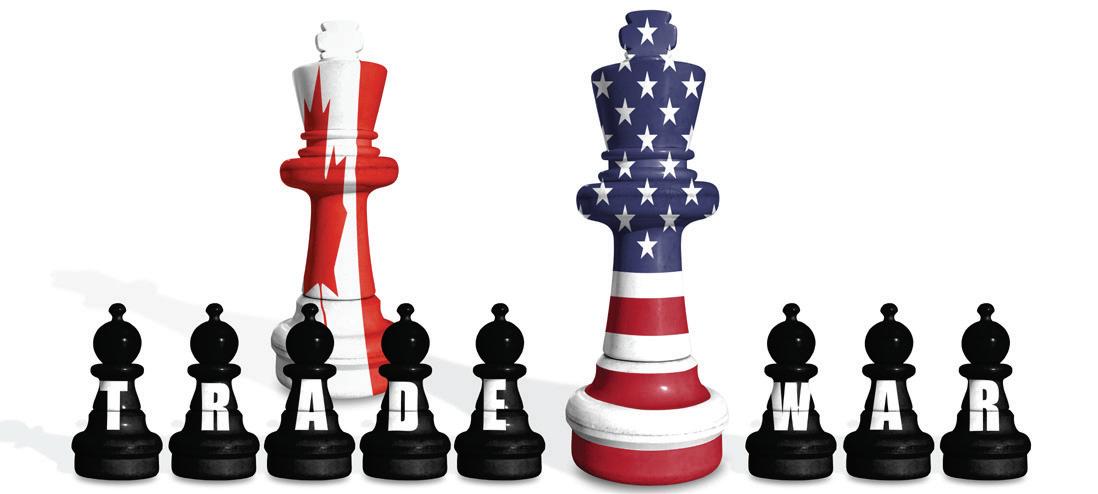
The Buy Canadian Movement
Recently, the trade relationship between Canada and the United States—two of the closest economic partners in the world—was shaken by a series of tariffs imposed by the Trump administration. These tariffs, targeted mainly at key Canadian exports such as steel and aluminum, created significant economic challenges but also had an unexpected consequence: they helped fuel a renewed and intensified Buy Canadian movement. This grassroots surge of consumer nationalism and economic patriotism has had lasting effects on Canadian businesses, consumers, and the country’s economic outlook.
Let’s unpack how these tariffs acted as a catalyst for Canadians to rethink their buying habits and bolster domestic industries.
The Origins of the Tariffs: “America First” Meets Canada
The Trump administration pursued an aggressive trade agenda under the slogan “America First.” Seeking to protect American manufacturing and steel industries, the U.S. government imposed tariffs of 25%
on steel and 10% on aluminum imports from many countries— including Canada. Although Canada is one of the closest allies and largest trading partners of the U.S., it was not exempt from these tariffs. This move caught many Canadian industries off guard. Canada exported billions of dollars of steel and aluminum products to the U.S., and suddenly these goods faced hefty tariffs, raising costs and threatening competitiveness. Beyond metals, there were also tariffs on agricultural products like dairy, lumber, and more, as well as a looming trade dispute around the renegotiation of NAFTA (rebranded as USMCA).
Economic Shockwaves: Impact on Canadian Businesses and Consumers
The tariffs created significant economic ripples. Canadian producers that relied heavily on the U.S. market faced increased costs or had to find alternative buyers, often at lower prices. This uncertainty translated to job risks in affected sectors, leading to worries about economic stability in regions
dependent on manufacturing and agriculture.
Consumers, too, felt the effects. Tariffs can raise prices on imported goods or goods made with imported inputs, which means everyday Canadians could face higher prices in stores. This led to increased awareness about where products came from and how trade policies could impact wallets directly.
Consumer Response: Shifting Towards “Buy Canadian”
In response to these economic pressures and uncertainties, a growing number of Canadians turned their attention to domestic products. The tariff tensions highlighted vulnerabilities in the country’s heavy reliance on U.S. supply chains, encouraging consumers to support local businesses to help sustain jobs and the economy.
This wasn’t just about nationalism or political statements—many Canadians saw practical benefits: Canadian-made products often meant more stable pricing, better
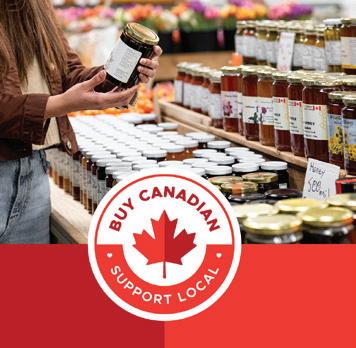
quality control, and less exposure to international trade risks. Choosing Canadian became a strategy to avoid the unpredictability associated with imported goods that might be subject to tariffs or trade disruptions.
Government and Industry Rally Behind Local
The Canadian government seized on this momentum by amplifying “Buy Canadian” campaigns, encouraging consumers and businesses to prioritize domestic production and sourcing. Initiatives ranged from promotional campaigns to funding support for industries hit hardest by tariffs.
At the same time, Canadian companies invested more in local supply chains and manufacturing capabilities to reduce their exposure to cross-border tariffs and uncertainties. This strategic pivot sought to enhance Canada’s economic sovereignty by fostering self-reliance and resilience in critical sectors.
Retailers and Brands Join the Movement

Retailers and brands noticed the shifting consumer sentiment as well.
Many stores began highlighting Canadian-made products more prominently in their marketing and product placement. Local brands capitalized on the trend by emphasizing their Canadian heritage and quality standards to appeal to consumers looking to “buy local.”
This cultural and commercial emphasis on Canadian products helped normalize and reinforce the Buy Canadian mindset in everyday purchasing decisions—whether it was food, clothing, home goods, or technology.
Long-Term Consumer Behavior Changes
Even after some tariffs were lifted or eased, the lasting impact on consumer behavior has been significant. Canadians have become more conscious of product origins and more deliberate about supporting domestic businesses.
Research shows increased demand for Canadian goods in multiple categories, reflecting a sustained preference rather than a temporary reaction to tariffs. Consumers value the perceived benefits of supporting the national economy, ensuring supply chain stability, and promoting environmentally responsible choices often associated with local production.
Lessons Learned: Economic Resilience and Sovereignty
The tariffs acted as a wakeup call about the risks of over-dependence on a single trading partner and the fragility of global supply chains. For Canada, the Buy
Canadian movement has evolved into a broader strategy promoting economic resilience, innovation, and sustainable growth.
This shift aligns with global trends encouraging local sourcing, shorter supply chains, and environmental responsibility—values that are increasingly important to today’s consumers and policymakers alike.
Donald Trump’s tariffs on Canadian goods were initially seen as a major economic challenge. However, they inadvertently galvanized Canadian consumers, businesses, and policymakers to rally around the Buy Canadian movement. This movement has fostered stronger domestic industries, reinforced national pride in Canadian products, and helped build a more resilient economy prepared for future global uncertainties.
In a world where trade policies and international relations can change rapidly, the renewed focus on Canadian-made products represents a powerful step toward economic independence and sustainability.
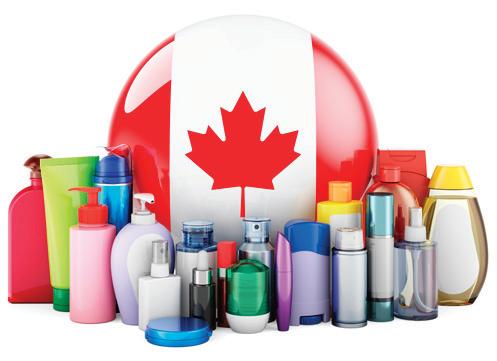




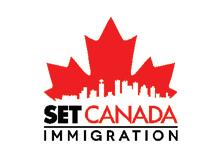



Supporting Children with ASD and SPD through Sensory Integration Therapy

Pediatric Occupational Therapy (OT) plays a vital role in supporting children with Autism Spectrum Disorder (ASD) and Sensory Processing Disorder (SPD), particularly when it comes to helping them navigate the world of sensory experiences. Many children with ASD and SPD face challenges in processing and responding appropriately to sensory input from their environment. These difficulties can affect learning, behavior, emotional regulation, and daily functioning. Sensory integration (SI) therapy offers a structured, evidenceinformed approach to help address these challenges.
Evaluation and Assessment
Effective sensory integration begins with a comprehensive evaluation by an experienced Pediatric OT. This process typically involves caregiver interviews, the use of standardized and nonstandardized assessment tools, and - most importantly - structured clinical observations to gain a comprehensive understanding of the child’s sensory processing and functional challenges. Common tools include the Sensory Profile, Sensory Processing Measure (SPM), sensory screening questionnaires, etc. Evaluations focus on identifying how a child responds to sensory stimuli such as touch, movement,
sound, and visual input, and how these responses influence their behavior, attention, and motor skills. The assessment process also considers the child’s participation in daily activities at home, school, and in the community. Collaboration with families, educators, and other healthcare providers is essential to understand the child’s unique sensory needs and their impact on function and participation.
Intervention Approaches
Sensory integration therapy is a play-based, child-led approach delivered in a sensoryrich environment. Based on these assessment and observation findings, treatment may include both active and passive sensory stimulation, carefully provided by the Pediatric OT to help the child respond more effectively to sensory input. The therapist designs activities that gently challenge the child’s ability to respond to sensory input in a more adaptive way. Examples include swinging, climbing, deep pressure input, tactile exploration,
and movement-based tasks that improve balance and coordination. A core principle of SI therapy is the “just-right challenge”; tasks that are neither too easy nor too difficult but promote engagement and gradual skill development. Interventions may also incorporate sensory diets - individualized routines of sensory-based activities and environmental adaptations to help the child maintain regulation
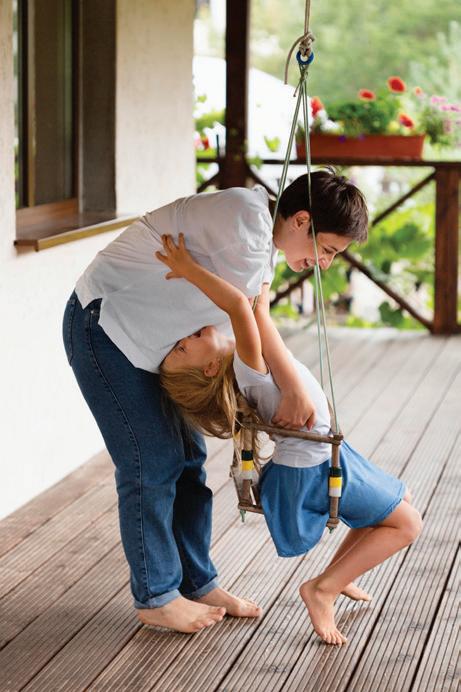
throughout the day. In addition to clinic-based interventions, pediatric OT often provide home and school-based strategies to support generalization of skills across settings. Education and coaching for caregivers and educators are essential components of successful intervention.

Outcomes and Impact Research and clinical experience suggest that sensory integrationbased OT can improve selfregulation, attention, motor planning, social participation, and the ability to complete daily tasks. While outcomes vary, many children show increased tolerance for sensory input, improved emotional regulation, and enhanced engagement in learning and play. They often become more confident and independent, with fewer meltdowns or shutdowns in overstimulating environments.
Importantly, sensory integration therapy supports not only skill development but also confidence and independence. Families often report improvements in daily routines, communication, and quality of life.
Sensory integration is not a one-sizefits-all approach. It is a collaborative, individualized therapy that helps children with ASD and SPD engage more successfully with the world around them. Whether you’re a parent looking for support or a professional seeking to understand
this approach, sensory integration offers a powerful way to build the foundation for learning, connection, and growth. By addressing how sensory processing affects behavior and function, pediatric OT helps children engage more fully in the world around themat home, at school, and beyond.

Mohsen Sangargir Occupational Therapist
Registered RASP Provider
604-376-1251
mohsen@thepacificpure.ca




Ayurveda & Heat Stroke
As global temperatures continue to rise and heatwaves become more frequent, the risk of heat-related illnesses such as heat stroke is growing. Heat stroke, a severe form of hyperthermia, occurs when the body’s temperature regulation fails, often due to prolonged exposure to high temperatures and dehydration. While modern medicine treats heat stroke as a medical emergency requiring immediate intervention, Ayurveda, the ancient Indian system of medicine, offers valuable insights into prevention and natural support during recovery.
Understanding Heat Stroke in Ayurveda
In Ayurveda, health is maintained through the balance of the three doshas: Vata, Pitta, and Kapha. Heat stroke is primarily viewed as a Pitta aggravation—Pitta being the dosha associated with heat, metabolism, and transformation in the body.
Key Ayurvedic Viewpoints on Heat Stroke:
Pitta Imbalance: Excessive heat, sun exposure, and dehydration cause an increase in Pitta, which leads to symptoms like high body temperature, irritability, inflammation, and dryness.
Agni (Digestive Fire): A disturbed digestive fire (Agni) can make the body more vulnerable to heat-related issues.
Dhatu Kshaya (Tissue Depletion): Dehydration and overheating can weaken bodily tissues, leading to fatigue, confusion, and even unconsciousness—hallmarks of severe heat stroke.
Symptoms of Heat Stroke
(Ayurvedic Perspective)
• Excessive thirst and dryness
• Dizziness or fainting
• Rapid heartbeat and breathlessness
• Flushed or hot skin
• Nausea or vomiting
• Mental confusion or delirium
Ayurvedic Prevention Tips for Heat Stroke
Stay Hydrated with Cooling Drinks
Drink herbal teas made from cooling herbs like coriander, fennel, or mint. Buttermilk, coconut water, and sugarcane juice are traditional Ayurvedic drinks that restore electrolytes and soothe aggravated Pitta. Avoid caffeinated and alcoholic beverages, which can dehydrate the body.
Eat a Pitta-Pacifying Diet
Include fresh fruits like watermelon, pomegranate, and cucumber. Avoid spicy, salty, and oily foods that increase internal heat. Favor light, cooked grains like rice and barley.
Use Cooling Herbs and Spices
Amla (Indian gooseberry): Rich in vitamin C and known for cooling properties.
Sandalwood and rose water: Applied topically or used in aromatherapy to calm the mind and cool the body.
Shatavari: Supports hydration and balances Pitta, especially in summer months.
Lifestyle Modifications
Avoid going out during the peak heat of the day (10 AM to 4 PM). Wear light, loose, and breathable clothing. Rest in shaded or well-ventilated areas.
Ayurvedic Remedies for Heat Stroke Recovery
If someone shows early signs of heat exhaustion or mild heat stroke, Ayurveda suggests the following supportive measures (note: severe heat stroke requires immediate
emergency medical attention):
Cool Compresses: Use cold cloths or sandalwood paste on the forehead and chest.
Herbal Mixtures: A mix of coriander seed water, ghee, and a pinch of cardamom can help reduce internal heat.
Licorice Tea: Known for its soothing and anti-inflammatory properties.
Pitta-Pacifying Oils: Abhyanga (self-massage) with cooling oils like Brahmi oil or coconut oil helps calm the nervous system.
When to Seek Medical Help
While Ayurveda provides excellent preventive care and mild symptom management, it is crucial to recognize when professional medical care is necessary. Heat stroke can lead to organ failure or death if not treated promptly.

Seek emergency medical attention if:
• The person is unconscious or confused.
• There is a very high body temperature (above 104°F / 40°C)
• Seizures or loss of coordination occurs
Ayurveda offers a rich and nuanced understanding of how to prevent and mitigate the effects of heat stroke by aligning with nature’s rhythms and maintaining doshic balance. While not a replacement for emergency care, Ayurvedic wisdom can be a powerful ally in building resilience against heat-related illnesses and supporting recovery in gentle, natural ways.
By integrating traditional practices like mindful hydration, dietary regulation, and herbal therapies, we can navigate the challenges of rising temperatures with greater balance and wellbeing.



GLOBAL CONFLICTS IN THE NEWS
How They Affect Your Mental Health

In an age of instant news updates and 24/7 media coverage, it’s nearly impossible to avoid stories about global conflicts—wars, political unrest, humanitarian crises, and violence. While staying informed is important, constant exposure to distressing news can take a serious toll on your mental health. Whether it’s the war in Gaza, the ongoing conflict in Ukraine, Israel & Iran war, India-Pakistan conflict or political instability in other parts of the world, many people find themselves feeling overwhelmed, anxious, and emotionally exhausted.
The mental health impact of consuming news about global conflicts is a growing concern among psychologists and mental health experts. Repeated exposure to graphic images, alarming headlines, and emotionally charged content can lead to what’s often referred to as “vicarious trauma” or “compassion fatigue.” Even if you are not directly involved or personally affected by the conflict, witnessing the suffering of others can evoke strong emotional responses such as sadness,
helplessness, guilt, and anger. For people with a history of trauma or anxiety, these feelings may be intensified and lead to symptoms like insomnia, irritability, or panic attacks.
Social media has amplified this effect by flooding timelines with real-time updates, often without warning or context. Scrolling through emotionally triggering content— even unintentionally—can create a sense of constant alertness and stress. It’s also easy to fall into a cycle of “doomscrolling,” where you keep
consuming distressing news in an effort to feel informed or in control, only to end up feeling more anxious and powerless.
Moreover, for people with personal, cultural, or ancestral ties to regions in conflict, the emotional burden can be even heavier. Watching events unfold in places that feel like “home” can bring about feelings of grief, survivor’s guilt, and isolation, especially if loved ones are directly affected.


To protect your mental health while staying informed, it’s important to set boundaries around media consumption. This could mean limiting your news intake to certain times of day, choosing reliable sources over sensationalist outlets, or taking regular breaks from social media. Practicing mindfulness, grounding techniques, or even turning off notifications can help reduce feelings of overwhelm.
Engaging in constructive action—such as donating, volunteering, or participating in peaceful advocacy— can also help channel emotions into positive, meaningful efforts.
Talking to someone you trust, whether it’s a friend, family member, or mental health professional, can be vital in processing emotions that arise from watching global conflicts unfold. It’s okay to acknowledge that what’s happening in the world is upsetting, and that your emotional response is valid—even if you’re not directly involved.
In a world where conflict and crisis are frequently broadcast into our lives, maintaining mental and emotional well-being is both a challenge and a necessity. By practicing awareness, setting boundaries, and seeking support when needed, we can care for ourselves while still being compassionate citizens of the world.







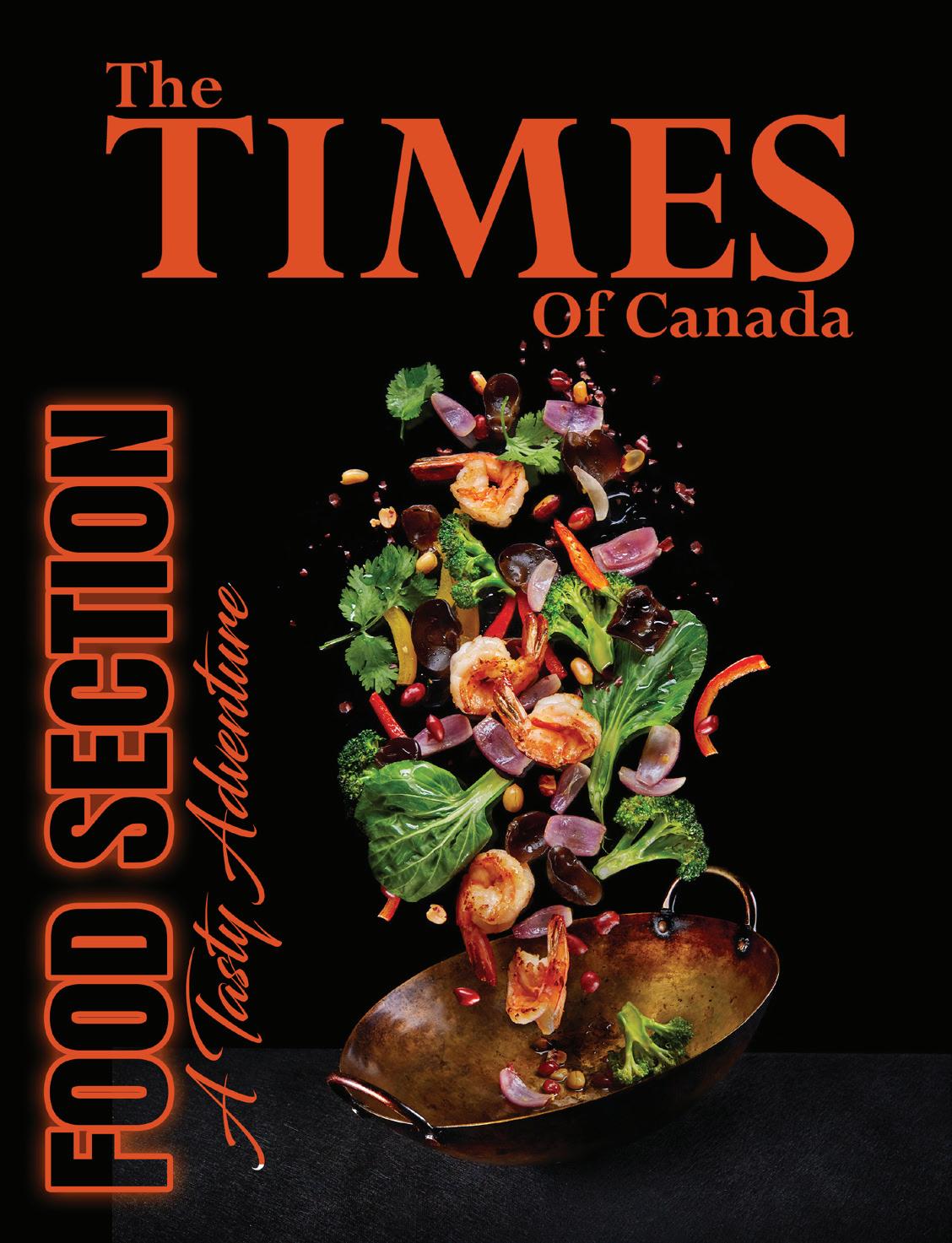

Citrus Mint Thirst Quencher

Ingredients:
1 liter (4 cups) cold water
1/2 cup fresh orange juice (about 1 orange)
1/4 cup fresh lemon juice (about 1 lemon)
1 tablespoon honey or maple syrup (optional, for sweetness)
A pinch of sea salt (helps replenish electrolytes)
A few fresh mint leaves
Ice cubes (as needed)
Instructions:
In a pitcher, combine the orange juice, lemon juice, honey (if using), and sea salt.
Stir well until honey and salt dissolve completely.
Add the cold water and mix thoroughly.
Toss in mint leaves and let it chill in the fridge for at least 15–30 minutes to infuse.
Serve over ice.


Watermelon Feta Salad
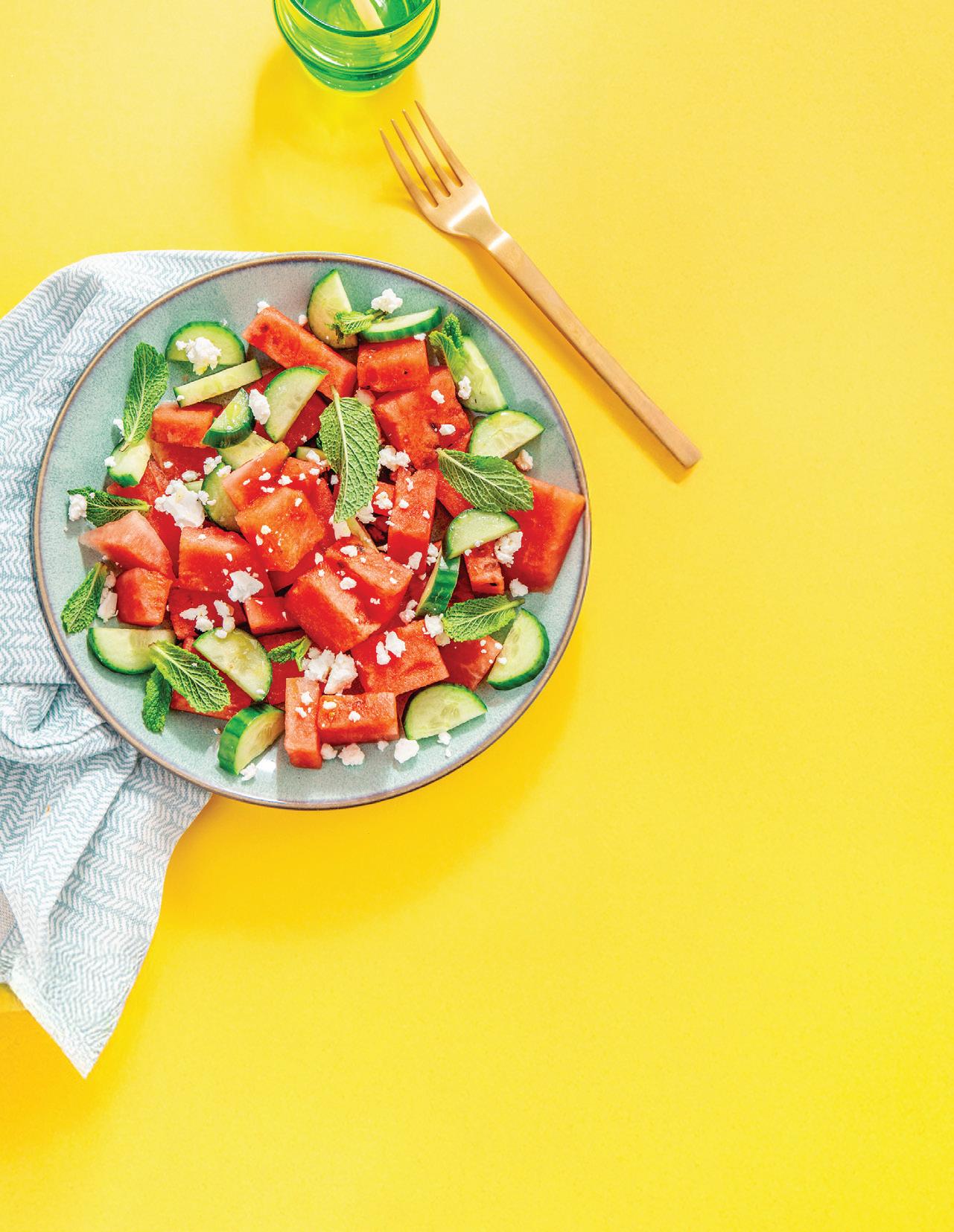
Ingredients:
2 cups cubed watermelon
1/2 cup crumbled feta cheese
1/4 cup fresh mint leaves Juice of 1 lime
Drizzle of olive oil (optional)
Instructions:
Combine watermelon, feta, and mint in a bowl.
Squeeze lime juice over the top and drizzle with olive oil. Toss gently and serve chilled.
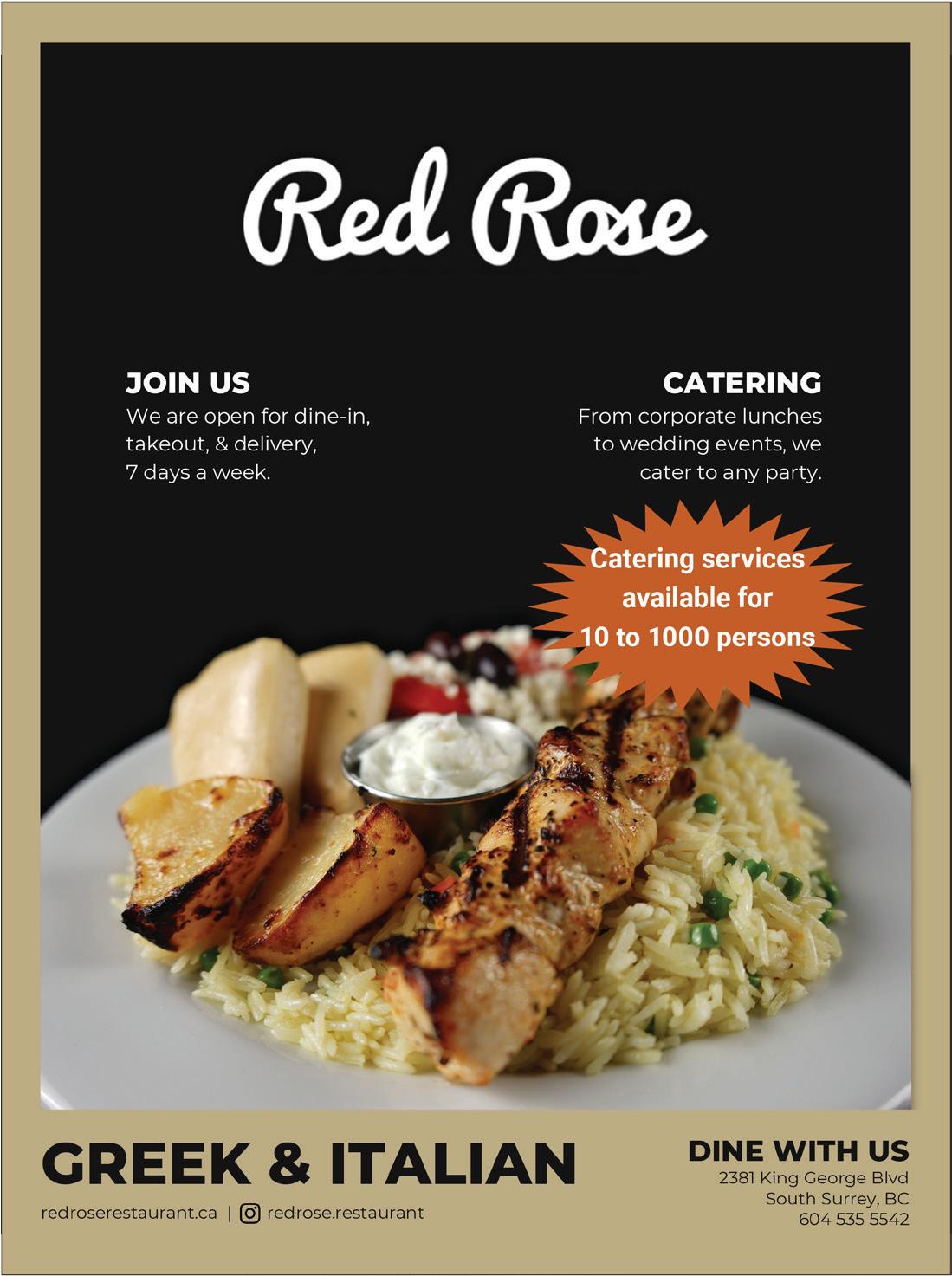


Tamarind Rice (Puliyodarai)
A tangy, spicy South Indian rice with tamarind paste.
Ingredients:
1 cup cooked rice
2 tbsp tamarind paste
1 tbsp sesame oil
1/2 tsp mustard seeds, curry leaves
Peanuts, dry red chilies, asafoetida, turmeric
Instructions:
Heat oil, add mustard seeds, peanuts, red chilies, and curry leaves.
Add tamarind paste, turmeric, and a little water. Cook 2–3 minutes.
Mix with cooled rice. Let sit for 30 mins before serving.
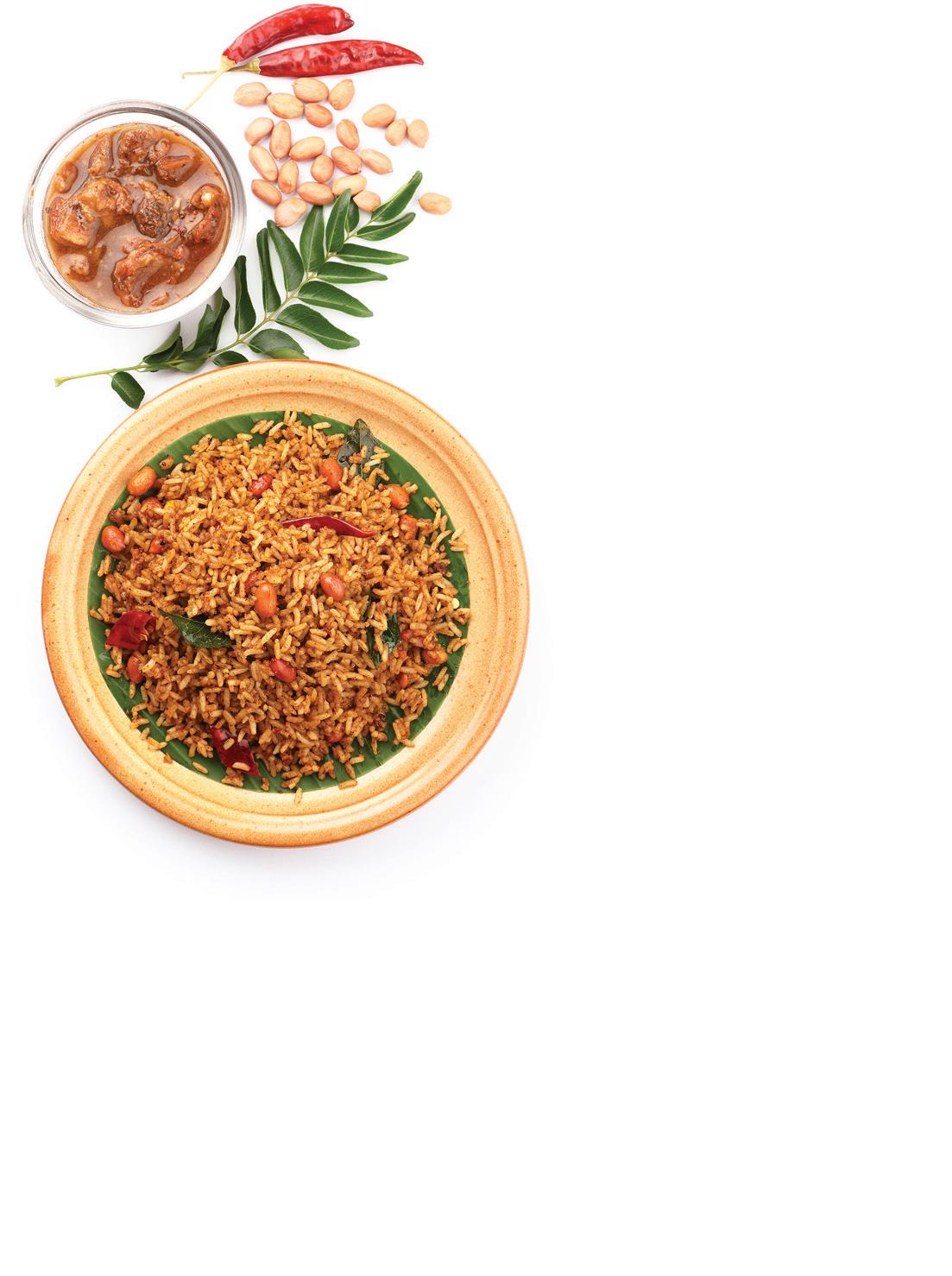



Summer Perfumes for Men and Women
Summer isn’t just about switching up your wardrobe— it’s the perfect time to refresh your fragrance collection too. As temperatures rise, heavy, spicy perfumes can feel overwhelming. Instead, summer calls for something lighter, fresher, and more vibrant—scents that mirror sunshine, ocean breezes, citrus groves, and blooming gardens.
In 2025, the perfume world has seen exciting new releases alongside timeless favorites that remain go-to choices for warm weather. Whether you’re planning a beach trip, a rooftop dinner, or just want to smell amazing during a sunny city stroll, this curated list has something for every scent lover.
Let’s dive into the top 5 summer perfumes for men and women that are making waves this year.

Top 5 Summer Perfumes for Women
Chanel Chance Eau Fraîche
Fragrance Family: Citrus-Floral
Top Notes: Lemon, Cedar
Heart Notes: Water Hyacinth, Jasmine
Base Notes: Teakwood, Amber, Iris
This version of Chanel’s classic “Chance” is bright, zesty, and sparkling with elegance. The citrus opening is instantly uplifting, while the soft floral heart and woody base make it mature and well-rounded. Eau Fraîche feels like an elegant summer dress— perfect for brunch, weddings, or evening garden parties. It’s feminine, clean, and long-lasting without being overpowering.

Dolce & Gabbana Light Blue Eau Intense
Fragrance Family: Fruity Floral
Top Notes: Lemon, Green Apple
Heart Notes: Jasmine, Marigold
Base Notes: Amberwood, Musk
This Mediterranean-inspired scent captures the feeling of an Italian summer—sunny skies, ocean breeze, and fresh fruit. Light Blue Eau Intense lasts longer and feels richer than the original, making it a staple for beach holidays or everyday summer wear. It’s playful, flirtatious, and unmistakably feminine.


Maison Francis Kurkdjian Aqua Universalis
Fragrance Family: Citrus-Fresh
Top Notes: Bergamot, Lemon
Heart Notes: Lily of the Valley, Orange Blossom
Base Notes: White Musk, Wood
Aqua Universalis is the definition of “clean girl” scent. It smells like crisp white sheets, sunshine, and fresh flowers all rolled into one. Perfect for minimalists who want something subtle yet elegant. It’s also great for office wear or hot days when anything too sweet or musky feels like too much.
Jo Malone Wood Sage & Sea Salt
Fragrance Family: Marine Aromatic
Top Notes: Ambrette Seed
Heart Notes: Sea Salt, Sage
Base Notes: Grapefruit, Red Algae
This scent feels like a coastal walk on a cool summer morning.
Earthy and fresh, it blends the saltiness of the sea with herbaceous sage and a touch of grapefruit. It’s unisex, light, and pairs beautifully with Jo Malone’s layering philosophy—try it with Peony & Blush Suede for a floral twist.


Byredo Sundazed
Fragrance Family: Citrus-Sweet
Top Notes: Mandarin Orange, Lemon
Heart Notes: Neroli, Jasmine Sambac
Base Notes: Cotton Candy, Musk
Sundazed is a warm-weather standout with a twist. It opens with juicy citrus, blooms into floral sweetness, and finishes with an unexpected soft cotton candy base that feels nostalgic yet modern. Think of a summer carnival or a golden-hour picnic—fun, sunny, and irresistible.


Top 5 Summer Perfumes for Men
Dior Homme Sport (2021)
Fragrance Family: Woody Citrus
Top Notes: Lemon, Bergamot
Heart Notes: Pink Pepper, Elemi
Base Notes: Vetiver, Amber, Woods
Refined yet energetic, Dior Homme Sport is the ultimate summer scent for the modern man. It combines zesty citrus with peppery spice and a smooth woody base. Wear it during the day or evening—it’s versatile, classy, and has just the right amount of edge for date nights or summer events.


Giorgio Armani Acqua di Giò Profondo
Fragrance Family: Aquatic Aromatic
Top Notes: Sea Notes, Bergamot, Green Mandarin
Heart Notes: Rosemary, Lavender, Cypress
Base Notes: Patchouli, Mineral Amber
Profondo builds on the iconic DNA of Acqua di Giò, bringing in a deeper, more aromatic twist. It smells like diving into the deep blue sea—clean, refreshing, and masculine. It’s one of the best all-day summer scents for men who want something oceanic but modern.
Louis Vuitton Imagination
Fragrance Family: Citrus Aromatic
Top Notes: Bergamot, Orange, Lemon
Heart Notes: Black Tea, Ginger
Base Notes: Ambroxan, Neroli, Olibanum
This is luxury bottled. “Imagination” is bright, bold, and incredibly refined. The citrus and tea combo feels crisp and cooling, while the base gives it lasting power and warmth. It’s a head-turner, ideal for upscale summer dinners, travel, or any occasion where you want to smell expensive.

Bleu de Chanel Eau de Toilette
Fragrance Family: Woody Aromatic
Top Notes: Grapefruit, Lemon
Heart Notes: Ginger, Jasmine
Base Notes: Incense, Cedar, Sandalwood
A timeless favorite, Bleu de Chanel is both fresh and powerful. The citrus opening is invigorating, while the woody base adds a sexy depth. Great for daytime wear but sophisticated enough for nighttime, it’s a signature scent that transitions seamlessly from work to play.

Tips for Wearing Fragrance in Summer

Hermès H24 Eau de Parfum
Fragrance Family: Green Aromatic
Top Notes: Clary Sage
Heart Notes: Narcissus, Rosewood
Base Notes: Metallic Musk H24 is a modern, green-forward fragrance that feels innovative and airy. With a metallic edge and a fresh, slightly floral twist, it’s perfect for the guy who likes unique, designer scents. Light enough for daytime use but interesting enough to get compliments.
• Apply after showering when skin is slightly damp—it helps the fragrance last longer.
• Avoid spraying directly on clothes in hot weather, especially dark fabrics—it can stain.
• Use lighter concentrations like eau de toilette or cologne over pure parfum for less intensity.
• Reapply during the day if needed—heat can cause perfumes to evaporate faster.
Choosing the right summer fragrance is like choosing the soundtrack to your season—it sets the mood, enhances your presence, and creates memories. Whether you love citrusy zest, beachy marine vibes, or soft floral notes, the best summer perfumes for 2025 combine freshness with personality.



Chill Out, Don’t Burn Out
The Summer Appliance Tune-Up
Refrigerator and Freezer Care
Summer heat forces your refrigerator and freezer to work harder than usual to maintain cool temperatures. This increased workload can lead to inefficiency or even malfunction if not addressed. Start by cleaning the condenser coils—dust and pet hair can accumulate on them, reducing cooling efficiency and increasing power consumption. Also, check the door seals to ensure cold air isn’t leaking out; cracked or loose gaskets should be replaced immediately. Avoid overfilling your fridge, as overcrowding blocks air circulation, making it harder for the appliance to keep items cool.
Air Conditioner Maintenance
Your air conditioner is your home’s most valuable asset during summer, so keeping it in optimal condition is essential. Clean or replace the air filters regularly—ideally once a month—especially if you live in a dusty or humid area. Blocked filters reduce airflow and make your unit work harder, consuming more energy. For split and central AC systems, ensure the outdoor condenser unit is free of leaves, dirt, or debris. Using timers or programmable thermostats can help manage energy consumption and reduce unnecessary strain on the system.
Washing Machine Tips
Summer typically means more laundry—think sweat, beach towels, and outdoor clothes. Avoid overloading your washing machine, as it can damage the motor and drum over time. After each cycle, leave the lid or door open to allow
moisture to evaporate, preventing mold or mildew buildup, especially in humid climates. It’s also a good idea to check the water hoses for any signs of wear, cracks, or leaks since heat can weaken rubber over time. Whenever possible, wash clothes in cold water to save energy and preserve fabric quality.
Kitchen Appliances: Ovens, Microwaves, and More
Using heat-generating appliances like ovens and stoves in the summer can make your kitchen unbearably hot. To reduce indoor heat buildup, try cooking during the cooler parts of the day, such as early morning or evening. Consider using smaller, more energy-efficient appliances like microwaves, toaster ovens, or slow cookers instead of the main oven. Make sure exhaust fans and range hoods are functioning well to ventilate the hot air effectively.
Ceiling and Exhaust Fans
Ceiling and exhaust fans play a key role in circulating air and improving comfort during the summer months. Make sure your ceiling fans are set to rotate counterclockwise; this pushes cool air downward and makes a room feel cooler without lowering the thermostat. Clean fan blades regularly to remove dust that can affect air quality and motor efficiency.
Water Heater Awareness
Even though hot water usage may decline in the summer, don’t neglect your water heater. Lower the temperature setting to 120°F (49°C) to save energy and reduce the risk of scalding. Drain a few gallons of water
from the tank to flush out sediment buildup, which can reduce efficiency and cause premature wear.
General Electrical and Appliance Safety
With appliances running more frequently in the summer, it’s important to be mindful of your home’s overall electrical load. Avoid using multiple high-wattage appliances at once, particularly in older homes with less robust wiring. Use surge protectors for sensitive electronics like TVs, computers, and Wi-Fi routers. Also, ensure appliances are placed in ventilated areas; crowding them into tight, enclosed spaces can lead to overheating.
Energy Efficiency and Smart Habits
Summer is a great time to build habits that benefit both your appliances and your energy bills. Run major appliances like dishwashers and washing machines during offpeak hours (typically at night) to ease the load on the power grid and help maintain indoor temperatures. Block out direct sunlight with curtains or blinds to reduce your home’s overall temperature, which helps appliances like your fridge and AC work more efficiently. If you’re considering upgrades, look for energy-efficient models with Energy Star certification—they’re designed to perform better with lower energy use.
By taking these steps, you not only prolong the life of your appliances but also create a cooler, safer, and more efficient home environment during the summer months.
















THE RISE OF PAN-INDIA CINEMA
Why
Once upon a time, Indian cinema was a tapestry of many distinct threads—vibrant, diverse, and beautiful in their uniqueness. Each region of the country had its own film industry, with its own stars, stories, music, and fanfare. A Tamil blockbuster might never travel beyond the borders of Tamil Nadu. A Bengali art-house gem might dazzle Kolkata but remain unknown in Delhi or Hyderabad. The languages were many, the worlds separate.
But then, something changed. And it wasn’t just the dubbing or the subtitles.
India, always a mosaic of languages and cultures, started watching movies differently. The audience grew curious about stories told outside their linguistic borders. With this growing curiosity, a new breed of cinema emerged—Pan-India movies—films designed to speak not in a single language, but in the universal language of emotion, spectacle, and storytelling. Today, these films are not just box-office successes; they’re cultural events. And they are, by almost every metric, outshining traditional regional films.
It’s
Outshining Regional Films??
Let’s unravel why.
Breaking Boundaries: From Local to National (and Global) Pan-India films are made with a singular ambition: to travel. They are not content with dominating just one region; they aim to captivate the entire country—and increasingly, the world. These films are dubbed into multiple Indian languages and sometimes released simultaneously in international markets. When Baahubali: The Beginning hit theaters in 2015, it didn’t just break records—it broke mental barriers. For perhaps the first time in Indian cinema history, a Telugu film was discussed in every corner of the country.

What followed was a cinematic revolution. Filmmakers began crafting stories that, while rooted in regional culture, had universal appeal. The settings could be tribal forests (Pushpa), historical fantasy (Baahubali), or gritty underworlds (KGF), but the emotions were big, bold, and relatable—love, loss, revenge, freedom, and destiny.
These themes resonated far beyond language. A hero’s rise from the ashes. A kingdom lost and regained. A rebel who challenges the system. Such archetypes transcend geography.
Spectacle Sells: The Rise of the Event
Movie
Pan-India films are more than stories; they are experiences. With massive budgets, cutting-edge CGI, breathtaking cinematography, and thunderous sound design, these movies are crafted to be theatrical spectacles.
Audiences don’t just watch RRR— they live it. They feel the roar of the tiger, the clash of swords, the thunder of rebellion. These films are created with the scale of a Marvel movie, but the soul of

Indian mythology and emotion. Regional films, which may rely more on intimate storytelling or cultural specificity, often can’t compete with this kind of visual and auditory grandeur.
Theaters, which struggled during the pandemic, found salvation in these mega-movies. Fans lined up for tickets. Songs became anthems. Dialogues turned into memes. And cinema felt alive again.
United by Stars: The Power of Cross-Industry
Casting
Today’s Pan-India movies are melting pots of talent. Directors, actors, composers, and technicians from different regions are coming together to create cinema that is pan-cultural. You’ll see a Kannada hero fighting a Telugu villain while a Bollywood actress adds emotional depth—and the soundtrack may be composed by a Tamil maestro.
This blend of talent excites audiences. Fans of Yash (from KGF), Jr. NTR and Ram Charan (RRR), or Prabhas (Baahubali) are no longer confined to their home states. These stars are now national icons. Their presence draws massive crowds, regardless of language or origin.
Even marketing has gone national. From appearing on Hindi reality shows to interviews in Malayalam newspapers, stars are engaging with audiences across the country, making them feel included and invested.
OTT Platforms and the Shrinking World
Streaming services have been silent but powerful game-changers. With platforms like Netflix, Amazon Prime, and Hotstar offering dubbed and subtitled versions of regional content, audiences across the country have grown comfortable with watching films outside their own language.
Viewers who once hesitated to watch a Telugu or Kannada film are now discovering the brilliance of regional stories—and craving more. This evolving mindset has primed audiences for Pan-India films. They’re not seen as “foreign” anymore, but as exciting and fresh.
Moreover, word-of-mouth spreads faster than ever. A well-edited action sequence from a Telugu film can go viral on Instagram and get millions of views from Hindi-speaking fans. A dialogue or punchline becomes a meme. In this digital age, content travels faster than trailers.
The Business of Scale: Economics of Success
Pan-India films are also a business strategy. When producers invest ₹200 or ₹300 crore into a movie, they need to recover it. Releasing the film in just one language or state isn’t viable. By planning a Pan-India release, producers increase their revenue streams—box office, digital rights, satellite rights, merchandise, and more.
Distributors and theater owners also prefer Pan-India releases, as they promise larger footfall. This results in
more screens, more showtimes, and more visibility. A well-made regional movie may still be a critical darling, but its box office is often restricted by geography.
A New Kind of Nationalism: Cultural Unity Through Cinema
In a diverse country like India, cinema has always been more than entertainment—it’s a shared cultural space. Pan-India films are creating a new kind of cinematic nationalism, not based on language or location, but on shared emotion and admiration. When people from Bihar and Kerala cheer for the same hero, or dance to the same song, it creates a sense of unity.
This is not to suggest that regional films are fading. On the contrary, regional cinema continues to thrive, especially in content-driven storytelling. But Pan-India films are shaping a new identity for Indian cinema—ambitious, inclusive, and unapologetically grand.
As audiences evolve, so does cinema. And in today’s India, the film that speaks to everyone—no matter their state or language—is the one that truly wins.







Yesteryears Clothing Trends Making a Comeback in 2025
Fashion has always had a love affair with the past. Trends that once ruled the streets or dominated red carpets decades ago are making a powerful return in 2025—with a modern twist. From the groovy ‘70s to the edgy ‘90s, vintage aesthetics are no longer just nostalgic; they’re fashionforward.
Whether it’s flared pants or oversized blazers, the cyclical nature of style proves that what’s old is chic again. Here’s a look at the top yesteryear trends that are making a major comeback in 2025.
Flared & Wide-Leg Pants (1970s)
Move over skinny jeans—wideleg and flared pants are owning the moment. Inspired by the ‘70s disco era, these pants add drama and length to your silhouette while offering comfort and movement. Designers are pairing them with crop tops, fitted blazers, or tuckedin oversized shirts, creating a perfect blend of retro and modern.
How to Wear It Today:
• Try flared jeans with a fitted graphic tee and chunky heels.
• Pair wide-leg trousers with a bralette and blazer for a chic power look.
Slip Dresses & Satin Silhouettes (1990s)
Minimalism from the ‘90s is back in a big way, especially with the return of the silky slip dress.
Once popularized by Kate Moss and Naomi Campbell, the slip dress is now a go-to for everything from streetwear to evening wear. Bonus: satin skirts and camisoles are also back on the radar.
How to Wear It Today:
• Dress it down with a plain white tee underneath and sneakers.
• Dress it up with heels, a clutch, and bold gold jewelry for an evening event.
Oversized Blazers & Power Shoulders (1980s)
The power suit from the ‘80s is back—with bold shoulders, boxy cuts, and oversized fits. Whether you’re styling it over a mini dress or cycling shorts, the oversized blazer trend offers both sophistication and attitude. It’s all about structure with a sense of effortlessness.

How to Wear It Today:
• Belt your oversized blazer at the waist for a feminine twist.
• Wear over bike shorts sneakers for a street-style inspired look.

Chunky Sneakers (1990s-2000s)
Yes, the “dad sneakers” are still in. Initially mocked and now fully embraced, these chunkysoled kicks from the late ‘90s and early 2000s are still dominating the athleisure scene. Think New Balance, FILA, or Yeezy vibes.
They add a cool factor to any outfit, whether you’re in track pants or a midi dress.
How to Wear It Today:
• Match with socks and joggers for a sporty look.
• Pair with skirts or dresses to add edge to feminine pieces.

Crochet (1970s Festival Fashion)
With Coachella and summer festivals influencing mainstream fashion, the boho aesthetic is experiencing a revival. Crochet tops, fringe details, earth-toned maxi skirts, and bell sleeves are all making their way back into wardrobes. It’s laid-back, romantic, and perfect for the warmer months.
How to Wear It Today:
• Layer crochet tops over bralettes or bikinis.
• Combine with high-waisted denim

and chunky jewelry for a modern boho look.
Low-Rise Jeans (2000s)
Whether you love them or hate them, low-rise jeans are creeping back into fashion from the early 2000s. Styled with baby tees or crop tops, they bring a bold Y2K aesthetic that’s both daring and fashion-forward. The key difference in 2025? They’re being made with better cuts and comfort in mind.
How to Wear It Today:
• Pair with oversized shirts for a more balanced silhouette.
• Choose relaxed, baggier styles over ultra-tight fits to keep it current.
Micro Accessories & Tiny Bags (1990s-2000s)
The mini bag obsession that started with Jacquemus has kept going strong into 2025. Inspired by the small purses of the late ‘90s and early 2000s, tiny bags, narrow sunglasses, and compact clutches are now go-to pieces to elevate an outfit—even if they don’t hold much.
How to Wear It Today:
• Treat your micro bag like jewelry— let it make a statement.
• Pair narrow sunglasses with high ponytails or sleek buns for that late ‘90s supermodel vibe.
Why These Trends Keep Coming Back
Fashion is cyclical. What was once out of style often returns because:
• Nostalgia fuels design inspiration and consumer demand.
• New generations discover and reinterpret past aesthetics.
• Social media revives vintage pieces through influencers and thrifting culture.
The difference today is how these vintage trends are reimagined with modern tailoring, materials, and inclusive fits—making them more

Whether you’re into ‘70s boho, ‘80s power dressing, ‘90s minimalism, or Y2K edge, there’s a throwback trend waiting to become your new favorite. The beauty of fashion in 2025 is that it encourages personal expression, blending past and present in a way that’s uniquely yours.
So go ahead—raid your parents’ closets, check out your local thrift stores, or dig into vintage markets. You might just find your next iconic piece from a decade long gone.


wearable and versatile than ever.


Cricket: A Developing Sport in Canada
Cricket may not be the first sport that comes to mind when thinking about Canada, a country traditionally known for its love of hockey and winter sports. However, cricket is a growing sport in Canada, experiencing steady development thanks to immigration, grassroots programs, and increasing media exposure. While it remains a niche sport compared to hockey, soccer, or basketball, its future looks increasingly promising.
Historically, cricket in Canada has deeper roots than many realize. The sport was played as early as the 18th century, and in fact, Canada participated in the first-ever international cricket match against the United States in 1844. Despite this early start, cricket lost popularity over the years as other sports took center stage. However, in recent decades, the tide has begun to turn, largely due to the influence
of immigrants from South Asia, the Caribbean, Australia, and England — regions where cricket is deeply embedded in the culture.
Immigration has played a pivotal role in the sport’s revival. Cities like Toronto, Vancouver, Calgary, and Edmonton are home to large populations of people from cricketloving nations. These communities have brought not only their passion for the sport but also their organizational skills, helping to establish local clubs, leagues, and youth academies. In Greater Toronto alone, hundreds of amateur and semi-professional games are played each season, often drawing large crowds on weekends.
At the national level, Cricket Canada, the sport’s official governing body, has been actively working to build infrastructure and promote cricket across the country. Their





efforts include youth development programs, school outreach, women’s cricket initiatives, and partnerships with international cricket boards. The men’s national team has participated in multiple ICC tournaments, including the ICC Cricket World Cup. In 2024, Canada qualified for the ICC Men’s T20 World Cup, marking a major milestone for the sport’s visibility and growth in the country.
One of the most exciting
developments in Canadian cricket is the emergence of the Global T20 Canada league. Launched in 2018, this professional T20 tournament has attracted international stars such as Chris Gayle, Shahid Afridi, and Yuvraj Singh. Although still in its early stages, the league offers domestic players a platform to gain experience alongside seasoned professionals, while giving fans a taste of highquality cricket action on Canadian soil.

Despite this progress, cricket in Canada still faces several challenges. The sport lacks consistent funding and sponsorship, media coverage remains limited, and there are relatively few cricketspecific facilities. Most games are played on converted soccer or baseball fields, which aren’t ideal for the sport. Moreover,
cricket is not yet widely included in school sports programs, which limits youth exposure.
However, there is growing optimism. The increasing number of young players, especially girls joining cricket clubs, signals a changing landscape. Social media and streaming platforms have also made international cricket more accessible, helping to fuel interest and awareness among younger Canadians. If current growth trends continue and more investment is made in facilities, coaching, and outreach, cricket could become a mainstream summer sport in Canada within the next decade.
In conclusion, cricket in Canada is no longer just a sport for immigrants or weekend enthusiasts. It is a developing sport with a rich history, a growing player base, and real potential for national and international recognition. With the right support and visibility, Canada could soon become a notable player in the global cricket scene.





Keep Your Car Paint Safe
Your car’s paint is more than just about looks—it’s the first line of defense against the elements and a big part of your vehicle’s overall value. Whether your car is brand new or a few years old, keeping the paint in good condition protects it from rust, fading, and wear. With regular care and the right habits, you can preserve that showroom shine for years to come.
Wash Regularly—But Do It Right
Dirt, bird droppings, tree sap, and even bug splatter can be surprisingly corrosive. Washing your car every 1–2 weeks removes contaminants before they damage the paint. Always use:
• A pH-balanced car shampoo
• A microfiber wash mitt
• The two-bucket method (one for soapy water, one for rinsing)
• Avoid dish soap or other harsh detergents—they strip away protective wax and dull the finish.
Dry After Washing
Never let your car air-dry after washing. Water spots can leave behind minerals that etch into the paint. Use a clean, soft microfiber drying towel to gently blot or wipe the car dry.
Wax and Seal for Protection
Waxing your car every 3–4 months adds a protective barrier against UV rays, dirt, and moisture. For longerlasting protection, consider a paint sealant or ceramic coating, which can last for months or even years with proper maintenance.
Park Smart
Where you park matters. Whenever possible:
• Park in a garage or under a covered area
• Avoid parking under trees (sap and bird droppings)
• Keep away from construction zones where debris and dust are common
• If covered parking isn’t available, consider using a car cover— especially for long-term outdoor storage.
Avoid Automatic Car Washes
While convenient, many automatic car washes—especially older ones with spinning brushes—can leave swirl marks and micro-scratches. Hand washing is safest, or choose touchless car washes as a better alternative.
Apply Paint Protection Film (PPF)
For extra protection, especially on the front bumper, hood, and side mirrors, paint protection film (also known as a clear bra) helps guard against stone chips, road salt, and minor abrasions. It’s a popular choice for new car owners or those driving in harsh conditions.
Detail Seasonally
A professional detail once or twice a year goes a long way in maintaining your car’s paint. Detailing involves deep cleaning, polishing out imperfections, and applying highquality protection layers.
Be Careful at the Pump
Fuel spills can eat into your clear coat. If you accidentally spill gasoline, wipe it off immediately with a soft, damp cloth. Don’t let it sit.
Don’t Skip the Undercarriage
While not directly related to the paint’s surface, road salt and grime on your car’s underside can accelerate rust, which can eventually affect painted panels. Use undercarriage sprays or pressure washers in winter or after off-road driving.




The Latest AI-Powered Assistants Transforming Everyday Life in 2025
Artificial Intelligence has moved beyond smart speakers and basic chatbots—today’s AI-powered assistants are more intuitive, interactive, and integrated into our daily lives than ever before. In 2025, a new wave of AI assistants is setting a higher standard for what digital help can look like, offering real-time assistance, contextual understanding, and even emotional intelligence.
Here’s a look at the most exciting and innovative AI-powered assistants making waves in 2025.
ChatGPT-4o by OpenAI OpenAI’s newest model, ChatGPT4o (the “o” stands for “omni”), brings multi-modal interaction to the next level. It can see, hear, speak, and understand tone in real-time conversations. It handles text, images,
and voice input simultaneously, making it ideal for virtual tutors, personal assistants, and customer service applications.
Key Features:
• Real-time voice conversations with human-like responsiveness
• Image analysis (e.g., describing scenes, solving math from a photo)
• Personalized memory and task management
• Available across mobile, desktop, and browser platforms
Google Gemini Assistant Google has fully integrated its Gemini AI assistant across Android


and Workspace. It’s more than just a chatbot—it can read and summarize your emails, create documents, edit photos, and offer smart suggestions across apps.
Key Features:
• Embedded in Gmail, Docs, Sheets, and Chrome
• Context-aware suggestions and task automation
• Multilingual support with seamless translation
• Integrated with Google Search and Maps for smarter responses
Microsoft Copilot
Microsoft Copilot has become a central AI assistant for professionals using Office 365 and Windows. It’s designed to help users write better emails, create presentations, and even write code using natural language.

Key Features:
• AI writing, editing, and brainstorming tools
• Code assistance in Visual Studio
• Integrated in Teams and Outlook for real-time meeting support
• Summarizes calls and takes action items
Apple Siri (Powered by Apple Intelligence)
With iOS 18, Siri has been rebuilt using Apple’s new Apple Intelligence system, which adds context awareness, app control, and privacyfocused on-device processing. Siri can now understand more complex requests and work across multiple apps at once.
Key Features:
• Understands and processes multistep commands
• Suggests relevant app actions and content
• Works offline with on-device intelligence
• Seamless integration with Apple ecosystem (iPhone, iPad, Mac, Vision Pro)
Humane AI Pin
This screenless wearable assistant is designed to reduce digital distractions. The Humane AI Pin uses voice, gesture, and projection to give you a personal AI assistant that lives on your lapel instead of your phone.
Key Features:
• Voice-first interface with contextual awareness
• Laser projection for visual feedback
• Real-time language translation and search
• No traditional screen—minimalist, privacy-first design

Rabbit R1
The compact Rabbit R1 rethinks AI assistants as physical devices. It’s
your digital life—from ordering food to playing music—without apps. Instead, it learns by watching how you use your phone and replicates actions.
Key Features:
• AI that learns from demonstration
• Simple interface with scroll wheel and camera
• App-free operation—executes tasks on your behalf
• Designed for portability and everyday use
AI-powered assistants in 2025 are smarter, more adaptable, and more humanlike than ever. They’re no longer limited to answering questions—they’re becoming collaborative partners in work, creativity, and daily living. With improved natural language processing, real-time voice capabilities, and deep integration across platforms, AI assistants are poised to become as essential as smartphones.
As these tools continue to evolve, the line between human interaction and digital support will blur, making everyday tasks easier, faster, and more intuitive.




CANADA’S NORTH A Land of Beauty, Challenges, and Opportunity
Canada’s North is a vast and unique region that encompasses nearly 40% of the country’s total landmass but is home to only a small percentage of its population. It includes the three northern territories: Yukon, Northwest Territories, and Nunavut, along with the northern parts of several provinces. This expansive area is known for its breathtaking natural landscapes, rich Indigenous cultures, abundant natural resources, and increasingly significant role in global environmental and geopolitical issues. While the North offers incredible beauty and opportunity, it also faces numerous social, economic, and environmental challenges that shape daily life for its residents.
The natural environment of Canada’s North is one of its most defining features. The region includes tundra, boreal forests, glaciers, mountain ranges like the Mackenzie Mountains, and extensive Arctic coastlines. It is home to some of the world’s most iconic wildlife, including polar bears, caribou, Arctic foxes, muskoxen, and beluga whales. Migratory birds travel thousands of kilometers to nest in the region during the short Arctic summer.
One of the most famous natural phenomena in the North is the Aurora Borealis, or Northern Lights. This spectacular light show, visible throughout much of the region during winter, attracts tourists and fascinates locals. The long, dark winters and continuous daylight in summer — known as the Midnight Sun — are also distinctive features of life in the North.
The North is home to a diverse and resilient population of Indigenous peoples, including the Inuit, First Nations, and Métis. These communities have lived in the region for thousands of years and maintain deep spiritual and cultural connections to the land, ice, and wildlife. Indigenous knowledge systems — often referred to as Traditional Ecological Knowledge (TEK) — are increasingly recognized as valuable in understanding and protecting northern ecosystems.
In recent decades, Indigenous groups in the North have made significant strides in self-governance. Landmark land claims agreements, such as the creation of Nunavut in 1999, have given Indigenous communities greater control
over their land, resources, and decision-making. Self-government agreements in the Yukon and Northwest Territories have also empowered local communities and helped preserve Indigenous languages, traditions, and laws.
Art and storytelling are also central to northern culture. Inuit sculpture, throat singing, drum dancing, and storytelling preserve cultural identity and pass knowledge down through generations. Across the North, Indigenous-led organizations, schools, and cultural centers play vital roles in strengthening communities and celebrating heritage.
Canada’s North is rich in natural resources, making it an important part of the country’s economy. Mining is a major industry in all three territories, producing gold, diamonds, silver, zinc, and rare earth minerals. These operations provide jobs and revenue, but
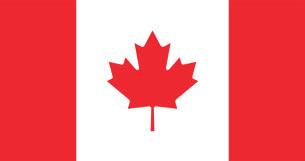
also raise environmental concerns and questions about long-term sustainability. There is also growing interest in oil and natural gas development, particularly in the Beaufort Sea and Mackenzie Delta, though this remains controversial due to its environmental impact and climate change implications.
Tourism is another growing sector. Visitors come to experience the unique landscapes, wildlife, and Indigenous cultures. Activities like dog sledding, Northern Lights viewing, and Arctic cruises offer economic opportunities for local communities, though the short tourist season and high travel costs can be limiting factors.
Despite these industries, many communities in the North still face significant economic challenges. Unemployment and underemployment are high, especially in remote Indigenous communities. The cost of living is much higher than in southern Canada due to transportation difficulties, especially in fly-in communities where goods must be shipped by air or seasonal ice roads. Basic necessities such as groceries, fuel, and construction materials are often prohibitively expensive.
Living in Canada’s North involves more than just enduring the cold. Residents face serious infrastructure deficits, including a lack of all-season roads, limited housing, and gaps in healthcare and education. In many communities, overcrowded and poorly insulated homes contribute to health issues such as respiratory infections and mental health challenges.
Food insecurity is a pressing issue across the North. The high cost of store-bought food, combined with the impacts of climate change on traditional hunting and fishing,
makes it difficult for many families to access healthy, affordable food. While traditional harvesting remains important, changing ice conditions, wildlife migration patterns, and environmental degradation are affecting these practices.
Healthcare access is also limited. Many communities lack full-service hospitals and rely on visiting doctors or emergency airlifts for serious medical issues. Mental health, substance abuse, and suicide are major concerns, particularly among Indigenous youth. There is a growing recognition that culturally appropriate and community-led health programs are essential to address these issues.
Perhaps the most urgent issue facing Canada’s North is climate change. The region is warming at nearly three times the global average, causing dramatic changes to the landscape and ecosystems. Melting permafrost, shrinking sea ice, and changing precipitation patterns are already affecting communities, infrastructure, and wildlife.
Thawing permafrost causes the ground to become unstable, damaging buildings, roads, and pipelines. Sea ice loss affects marine transportation, wildlife hunting, and traditional knowledge systems. Rising temperatures are changing animal migration patterns and threatening the survival of iconic species like polar bears and caribou.
These changes have local impacts but also global significance. The Arctic plays a major role in regulating the Earth’s climate, and the melting of ice contributes to rising sea levels worldwide. The opening of new shipping routes through the Northwest Passage is also raising geopolitical interest from countries around the world, including Russia, China, and the United States,
highlighting the need for Canada to assert its sovereignty in the region.
Despite these challenges, there is a growing sense of optimism and possibility in Canada’s North. Investments in renewable energy, such as wind and solar projects, are reducing reliance on diesel fuel in remote communities. Expanding internet access and digital infrastructure is connecting northern communities to the rest of the country and the world.
Education and youth empowerment are key to the North’s future. Increasing numbers of young people are pursuing higher education and returning to their communities with skills in business, environmental science, healthcare, and public administration. Schools that incorporate Indigenous language and culture are helping preserve traditions while preparing youth for modern careers.
Crucially, Indigenous leadership and governance continue to shape the path forward. Land claim agreements, resource revenue-sharing, and communitydriven policy-making are giving Northerners a stronger voice in national decisions. As awareness of the North’s importance grows — from environmental protection to cultural preservation and national sovereignty — so too does the recognition that sustainable development must be led by those who live there.
Canada’s North is a land of extraordinary contrast: stunning in its natural beauty, rich in culture and resources, yet challenged by remoteness, climate, and historical inequality. It is a region undergoing rapid change, facing the front lines of climate disruption, while also emerging as a place of resilience, innovation, and opportunity.


Emma & Aarav’s

A Love Born Under the Canada Day Sky
The sun was shining bright over Vancouver’s picturesque waterfront on July 1st, 2024 — Canada Day, a day of celebration, unity, and hope. The city was buzzing with excitement: the smell of maple syrup, laughter, fireworks rehearsals, and the soft hum of live music floating in the warm summer air. Among the thousands gathered along the seawall, two strangers were about to cross paths and begin a story neither could have imagined.
Meeting Amidst the Festivities
Emma, a spirited young woman with sun-kissed blonde hair and a carefree smile, had always loved Canada Day. For her, it symbolized new beginnings and a shared sense of belonging. That afternoon, she had come with a few friends to enjoy the street performances and the vibrant atmosphere.
Aarav, an Indo-Canadian tech enthusiast with thoughtful eyes and an easy charm, was visiting from
nearby Burnaby. He’d come to soak in the celebrations and to try the famous Canadian poutine he’d heard so much about.
As fate would have it, they found themselves standing side by side in the long line for a food truck. Emma reached for the last maple-glazed doughnut just as Aarav’s hand did the same. Their eyes met with a mix of surprise and laughter.
“Looks like we both have great taste,” Aarav joked, stepping back to offer the doughnut to her.
Emma smiled warmly, “Why don’t we share it instead?”
That simple moment sparked a conversation that flowed effortlessly—about favorite Canadian traditions, cultural stories from their families, and dreams for the future. As fireworks lit up the sky later that evening, Emma and Aarav found themselves sharing not just the view,
but a connection that felt rare and genuine.
Togetherness
The days after Canada Day passed in a whirlwind of discovery. Emma loved hearing Aarav’s stories of his family’s journey from India to Canada and how they balanced tradition with modern life. Aarav adored Emma’s adventurous spirit and her passion for photography, which brought colors and emotion to everyday moments.
They explored Vancouver together— from strolling through Stanley Park’s towering cedars to sipping coffee in cozy cafés tucked away in Gastown. Each shared experience deepened their bond, revealing a beautiful blend of two cultures and hearts.
A Year of Firsts
Now, as Canada Day 2025 approaches, Emma and Aarav are about to celebrate their first anniversary since that magical
meeting. They often laugh about the coincidence of their story beginning on a day that celebrates unity and diversity—values they both cherish deeply.
This year, they plan to return to the same spot by the waterfront where it all started, watching the fireworks and reflecting on how much they’ve grown together. They’ve become each other’s biggest supporters, confidants, and partners in everything from late-night study sessions to weekend hikes.
What the Future Holds
Emma and Aarav know their journey is just beginning. With their roots grounded in the rich tapestry of Canadian culture and the vibrant colors of their unique backgrounds, they’re excited to build a future full of love, adventure, and shared dreams.
Under the Canada Day sky, a year ago, two strangers found each other—and with every passing day, their story continues to unfold like the fireworks that first illuminated their path: bright, hopeful, and unforgettable. Happy First Anniversary, Emma and Aarav! Here’s to many more Canada Days filled with love and laughter.







HOROSCOPE (July - Oct 2025)
Aries (March 21 – April 19)
From July to October, you’re called to assert your identity and harness your inner fire. Mars, your ruling planet, lends confidence and a no-nonsense drive. July and August favor passion projects, romance, and bold career moves. Expect some re-evaluation in September when Mercury retrograde urges a closer look at routines and partnerships. October brings breakthroughs—especially in shared finances and emotional intimacy. Stay decisive but open to transformation.
Best months: August (for career), October (for breakthroughs in love or business)
Watch out: Impulsive decisions in late September
Taurus (April 20 – May 20)
This period sees you navigating shifts in your values, home, and relationships. Uranus in your sign continues to push for change—don’t
resist it. July brings domestic clarity or a move. August encourages emotional healing and deeper connections. Come September, rethink how you balance work and wellness. In October, your partnerships (romantic or business) may evolve or be tested. Trust your instincts and don’t fear letting go of what no longer supports your growth.
Best months: July (home matters), September (new habits)
Watch out: Stubbornness in partnerships during October
Gemini (May 21 – June 20)
The next four months are lively and mentally engaging. July and August bring opportunities to travel, study, or share your voice publicly. Venus sweetens your speech, making this a great time for negotiations or launching creative projects. September calls for reflection—Mercury retrograde asks you to revisit ideas or mend fractured friendships. By October, your
focus turns to health and productivity—perfect for clearing out mental and physical clutter.
Best months: August (creative communications), October (personal discipline)
Watch out: Miscommunications in September
Cancer (June 21 – July 22)
With a New Moon in your sign in July, you’re being nudged to redefine your identity. Expect emotional clarity around family or legacy. Venus helps you feel more grounded financially in August, while September focuses on refining how you communicate your needs. October brings a wave of creativity and perhaps romance. Use this period to build inner strength, and trust your intuition.
Best months: July (emotional rebirth), October (creative renewal)
Watch out: Overcommitting emotionally in August
Leo (July 23 – August 22)
July and August are magnetic for you—your charisma peaks, and so does your drive. This is a time to take center stage, whether through love, art, or leadership. September, however, asks you to check your ego and focus on inner healing and financial planning. By October, partnerships become central. If you’re single, a serious connection may appear. If partnered, conversations around fairness and shared goals will surface.
Best months: August (personal power), October (relationship progress)
Watch out: Money missteps in September.
Virgo (August 23 – September 22)
The coming months highlight internal work and personal growth. July and early August are ideal for quiet planning and nurturing your spiritual self. As your season begins in late August, energy rises. A New Moon in Virgo on September 29 offers a major reset. Use it to set long-term goals. October emphasizes health, boundaries, and regaining balance in relationships. Be cautious with communication, especially during Mercury retrograde (your ruling planet).
Best months: September (rebirth), October (structure and clarity)
Watch out: Overthinking and emotional burnout in July
Libra (September 23 – October 22)
From July to October, you’re drawn to others more than usual. July brings opportunities through friends or group endeavors. Venus, your ruling planet, enhances social magnetism. In September, you may need to redefine a relationship’s boundaries. Mercury retrograde in your sign this month asks you to rethink your identity in partnerships. October is transformative—you’ll either deepen a connection or walk away with peace. Trust the process.
Best months: July (networking), October (romantic clarity)
Watch out: Indecision in mid-September
Scorpio (October 23 – November 21)
This is a potent period for stepping into a leadership role—personally or professionally. July and August amplify your ambition and visibility. You’re building toward something major, especially if you’ve been working quietly behind the scenes. September urges emotional clarity and self-care. By October, deep intimacy and financial restructuring come into focus. You may uncover a hidden truth or make a life-changing decision. Don’t fear the deep dive.
Best months: August (career power), October (emotional truth)
Watch out: Burnout in September if you don’t pause
Sagittarius (November 22 – December 21)
The next four months inspire growth in surprising directions. July and August bring curiosity, travel, or study opportunities. Say yes to adventure, but keep your commitments grounded. September helps you refine your career vision, though Mercury retrograde could delay plans—don’t rush. October sparks big questions: Where are you going? Who do you want to become? Reflect and realign before charging ahead in November.
Best months: July (personal expansion), October (spiritual reflection) Watch out: Overpromising in early August
Capricorn (December 22 – January 19)
Your inner architect awakens in these four months. July pushes you to examine emotional security and deepen bonds. August supports financial or business initiatives. However, as Mercury retrogrades in September,
reassess long-term plans—are they aligned with your soul? October brings a turning point, especially with partnerships or investments. Release outdated structures to make space for freedom and innovation.
Best months: August (money and strategy), October (emotional clarity)
Watch out: Control issues mid-September
Aquarius (January 20 – February 18)
Relationships dominate your sky from July to October. Whether it’s love, friendships, or business partnerships, you’re being called to reassess and recalibrate. July opens doors for connection, and August deepens them. In September, Mercury retrograde may stir confusion, so tread lightly with contracts and commitments. October is ripe for breakthroughs—you may meet a soulmate, renegotiate a dynamic, or end a chapter for good.
Best months: July (meeting new people), October (truth in love)
Watch out: Misreading someone’s intentions in September
Pisces (February 19 – March 20)
These months are about aligning your dreamy nature with daily discipline. July and August are perfect for focusing on health, schedules, and purpose. Romance may surprise you in early August. In September, relationships demand attention, but Mercury retrograde may slow things down—use this time for reflection, not reaction. October ends with a Full Moon in your sign, encouraging a powerful emotional release. Let go of self-doubt. You’re ready for more.
Best months: August (work-life balance), October (personal liberation) Watch out: Taking on too much in early September



Travel safety guide during times of global conflicts and wars
Traveling during periods of global unrest or war requires not only logistical preparation but also emotional and ethical awareness.
Research Geopolitical Conditions
Thoroughly
The first and most crucial step is thorough research. Before planning any trip, consult your government’s official travel advisory website, such as the U.S. State Department or the UK Foreign Office. These sources offer up-to-date warnings, entry requirements, and safety guidelines tailored to each country. It’s also wise to go beyond government advisories by following international news, local sources, and verified travel forums to understand regional tensions and potential risks. Conflicts can often spill over into neighboring countries or create ripple effects, including economic instability, supply chain disruption, or sudden protests.
Have a Flexible Itinerary
Given the unpredictability of conflict zones, it’s essential to keep your travel plans flexible. Avoid rigid itineraries, and when possible, book flights, accommodations, and tours that allow cancellations or last-minute changes. Always have alternative routes or destinations in mind, especially if your primary location becomes unsafe or logistically inaccessible. Remember, flexibility is not just about comfort— it’s a safety strategy.
Register with Your Embassy
Another key tip is to register your travel with your embassy. Many countries offer traveler enrollment services—like the U.S. Smart Traveler Enrollment Program (STEP)—which help local embassies locate and assist citizens during emergencies. By registering, you also stay informed about critical updates, evacuation notices, or border changes. This
is especially important in volatile regions where communication networks can suddenly collapse or access becomes restricted.
Stay Digitally Connected
Your communication setup is another area you shouldn’t overlook. Make sure your phone is unlocked and ready for a local SIM card, or purchase a global roaming package in advance. Download essential apps such as offline maps (like Maps.me or Google Maps offline), a translation tool, local emergency services contact information, and the official app or website for your country’s embassy. Keep a portable charger or power bank with you at all times—especially useful in areas with unreliable electricity or when stuck in transit for extended periods.
Prepare Financially Financial preparedness can be a lifeline in conflict-prone areas.




Carry multiple forms of payment, including an international credit card, local currency, and possibly even a backup currency like U.S. dollars or euros. Keep some cash hidden in a secure place on your person or in your luggage, in case of ATM outages or digital network failures. Be aware of any sanctions, banking restrictions, or limits on foreign exchange in your destination country, and don’t rely solely on mobile payments.
Pack Smart for Emergencies
When packing, think in terms of basic survival. Along with your regular travel essentials, include photocopies of important documents like your passport, visa, travel insurance, and any vaccination records. Add a compact first aid kit, extra prescription medication, water purification tablets or a portable filter, a flashlight, non-perishable snacks, a lightweight blanket, and a multiuse tool (like a Swiss Army knife). Consider these your emergency gobag items—they may never be used, but you’ll be grateful to have them if needed.
Learn Local Customs and Laws
Respecting local customs becomes even more important in sensitive areas. Learn the cultural norms of the region, including dress codes, religious practices, gender roles, and taboos. Avoid political discussions,
demonstrations, or photographing government and military facilities. In conflict-affected regions, tensions may be high, and even casual remarks can be misinterpreted. By moving with humility and discretion, you reduce your risk and show respect to the people whose lives are directly impacted by the crisis.
Avoid Conflict Hotspots
Avoid proximity to hotspots entirely—even if a region is not in active conflict, border areas, protest zones, or regions near military installations can quickly become dangerous. Steer clear of these places and follow local news carefully. It’s also important to note that most travel insurance policies do not cover areas listed under “Do Not Travel” advisories, so doublecheck your coverage. Consider adding travel insurance that includes emergency evacuation for worstcase scenarios.
Have an Exit Plan
Having a well-thought-out exit plan is just as important as your arrival plan. Know where your embassy or consulate is located and have their contact information saved both digitally and in print. Familiarize yourself with the nearest major airport or land border crossing, and identify safe zones, hospitals, and transportation hubs in your area. If things escalate, you’ll be prepared
to move swiftly and safely. Services like Global Rescue or MedJet can also assist with medical or security evacuations if included in your policy.
Stay Informed, But Calm
Strive to remain informed without succumbing to panic. Join traveler forums, expat groups, or even local community pages on social media to get on-the-ground updates. Locals often know what’s happening faster than any foreign agency, and they can provide advice about navigating curfews, navigating roads, or avoiding tension points. That said, always cross-check community information with official sources before making big decisions.
Mindset and Ethics
From a spiritual and ethical standpoint, ask yourself whether your travel is necessary or whether it might burden already strained communities. During times of war, even peaceful regions nearby may be experiencing trauma, migration surges, or economic stress. If you choose to travel, do so with empathy. Avoid exploitative behavior, such as war tourism or insensitively photographing suffering. Instead, find ways to support the local economy ethically—through conscious accommodation choices, tipping generously, and engaging with NGOs or aid groups if appropriate.
Travel during global
conflicts
demands much more than passport and tickets—it asks for mindfulness, responsibility, and deep awareness. While the world continues to experience shifts and disruptions, thoughtful and well-prepared travelers can still find ways to move safely and respectfully. By staying informed, grounded, and connected to your inner compass, you can make meaningful journeys even in uncertain times.



